Sabah culture is so colourful. We have over 30 indigenous and 200 sub-ethnic groups, most of them have distinct traditional costume, a heritage that tells the world their identity, traditions, and stories. Sabah is beautiful because of this cultural diversity. I’ve been photographing Sabah traditional costumes for 15 years and would like to share what I think are the 10 most beautiful traditional costumes of Sabah (not in any order).
Please note there are always variants in costumes due to different occasions such as wedding, ceremony and social status, so I only can give you a general view. FYI, many ethnic groups share common elements such as linangkit (needlework), siga (headgear) and belts (e.g. Tangkong, Himpogot).
1. Kadazan Penampang
Kadazandusun is the largest indigenous group of Sabah, and Kadazan Penampang is the biggest sub-ethnic. Their traditional costume has become an iconic dress to represent Sabahans.
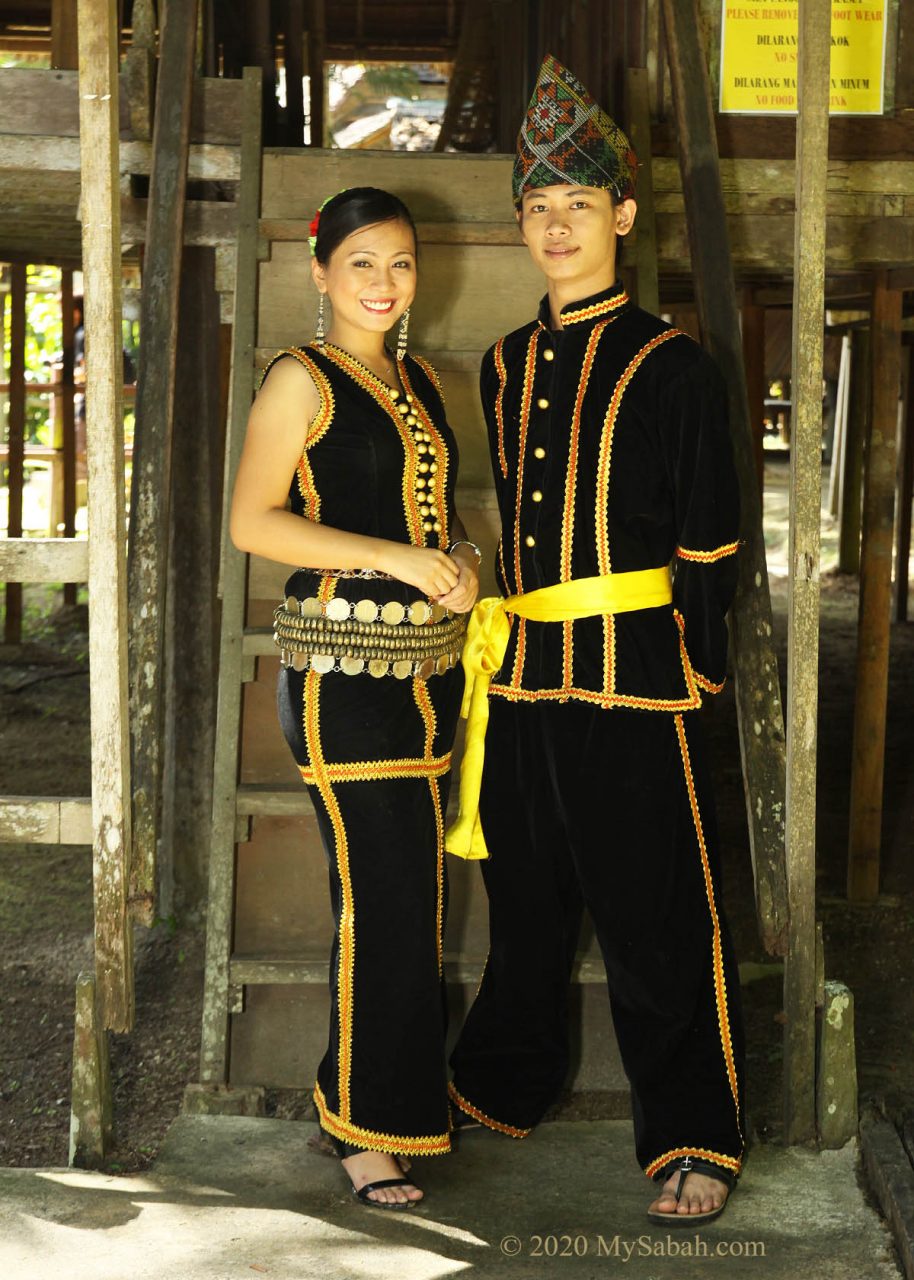
Kadazan Penampang costume has basic trimmings and embroidery and may look a bit plain. However, simplicity is beauty, like Vietnamese Ao Dai and Chinese Cheongsam. Though it has relatively less shining ornaments and accessories, it is an elegant cloth inspired by sarong kebaya.
The costume of young female consists of a long cylindrical wrap skirt and a sleeveless blouse (Sinuangga’), and decorated with gold trimmings running along the opening for head and arms, and along the seams at the side and along the middle of the back. Around the trimming on neck and front is 20 or more gold plated Betawi buttons.
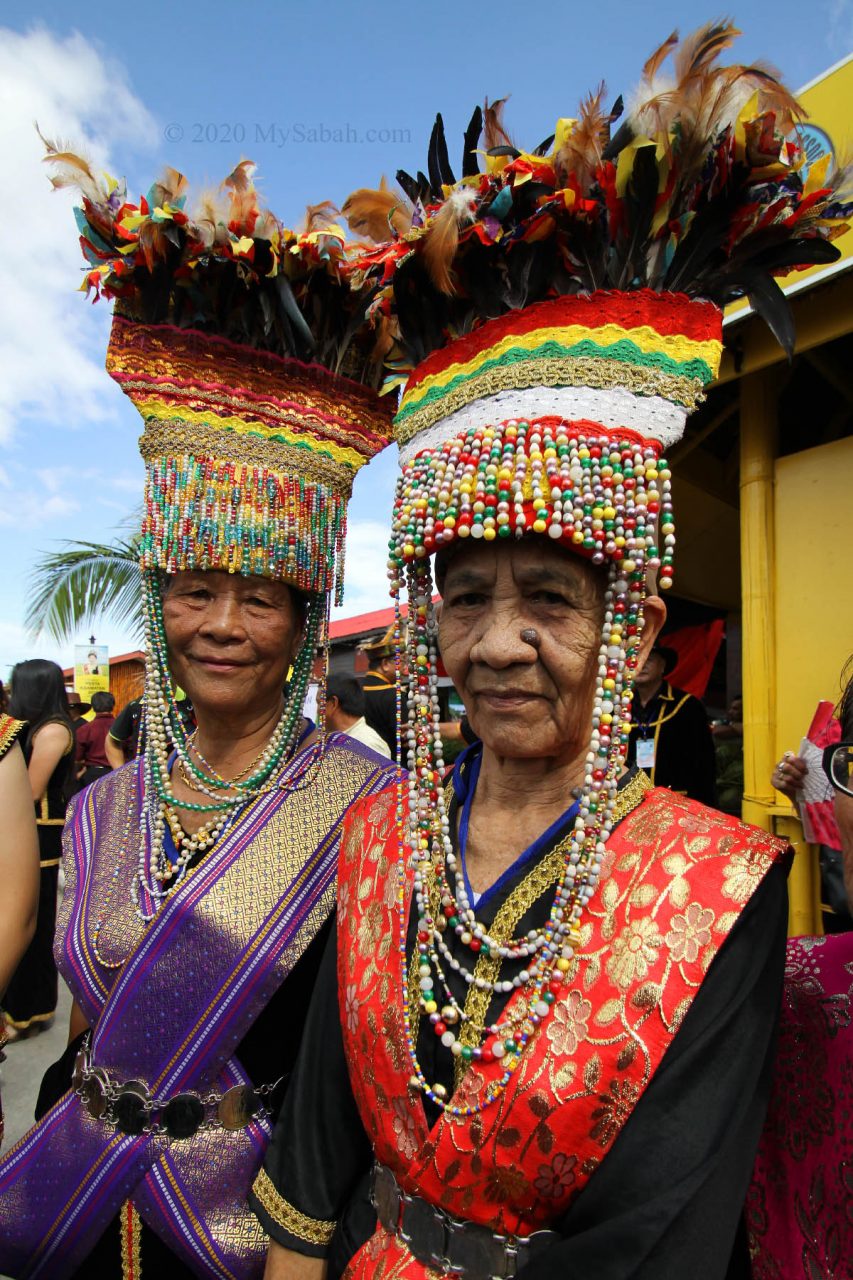
Silver-dollar chains (himpogot) and brass ring belts (tangkong) in set of 2 to 3 are worn around the waist and hip to emphasize the curve. Some himpogot and tangkong are antique passed on to women as heirloom or wedding dowry, they can cost thousands of dollars!
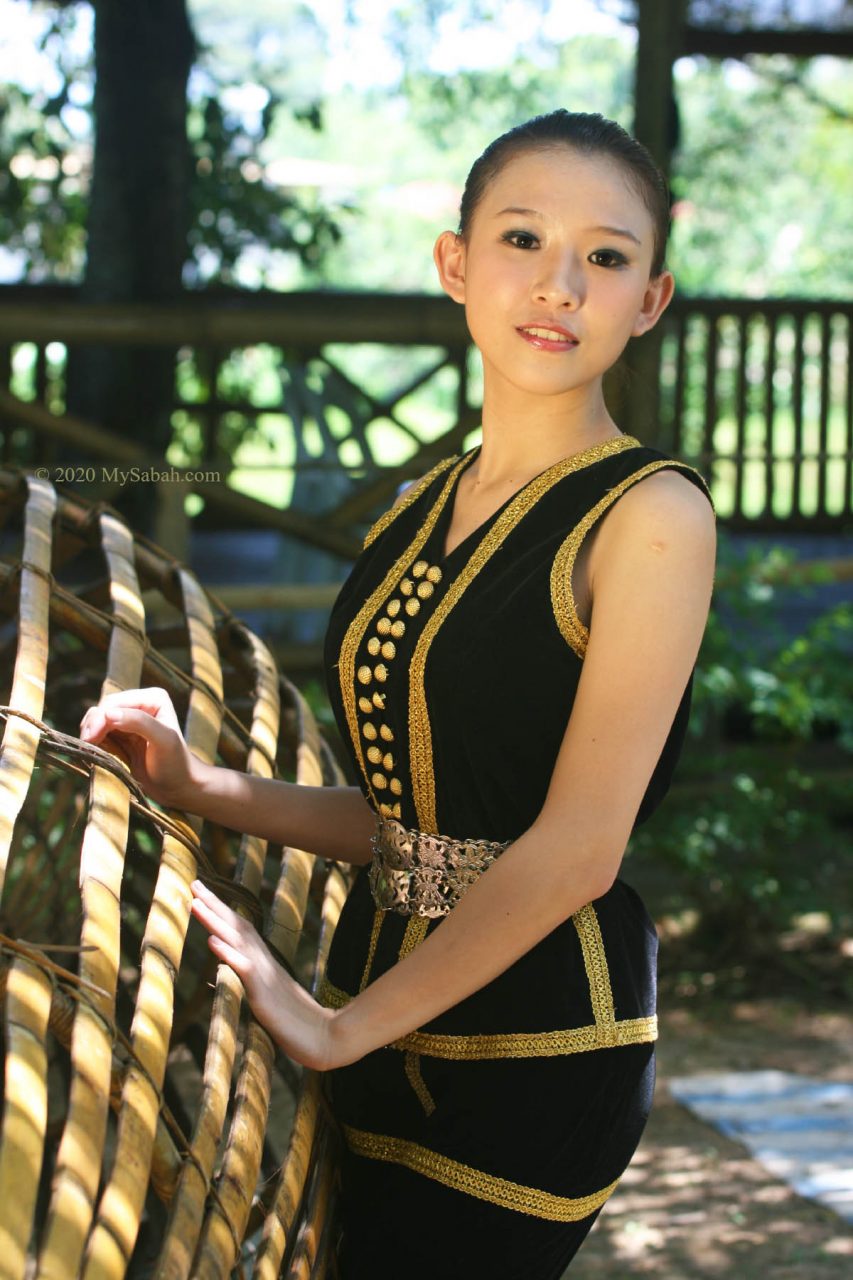
The jacket and trousers of Kadazan Penampang men bear some Chinese influence. They wear headgear called siga, a very intricately woven square piece of headcloth, handwoven or embroidered, and folded to the shape of the peak of the Mount Kinabalu. Most men from Kadazandusun ethnic group wear siga.
The basic material for clothing is black commercial fabric, silk or velvet for ceremonial occasions. It is also made from cotton for daily wear.
2. Dusun Lotud
With a population of only 6,000 in Tuaran district, Dusun Lotud is very famous for weaving the embroidered panel called linangkit, which is used to decorate the skirt, sash and trousers of many Sabah tribes. Without linangkit, Sabah traditional costumes would be far less colourful.
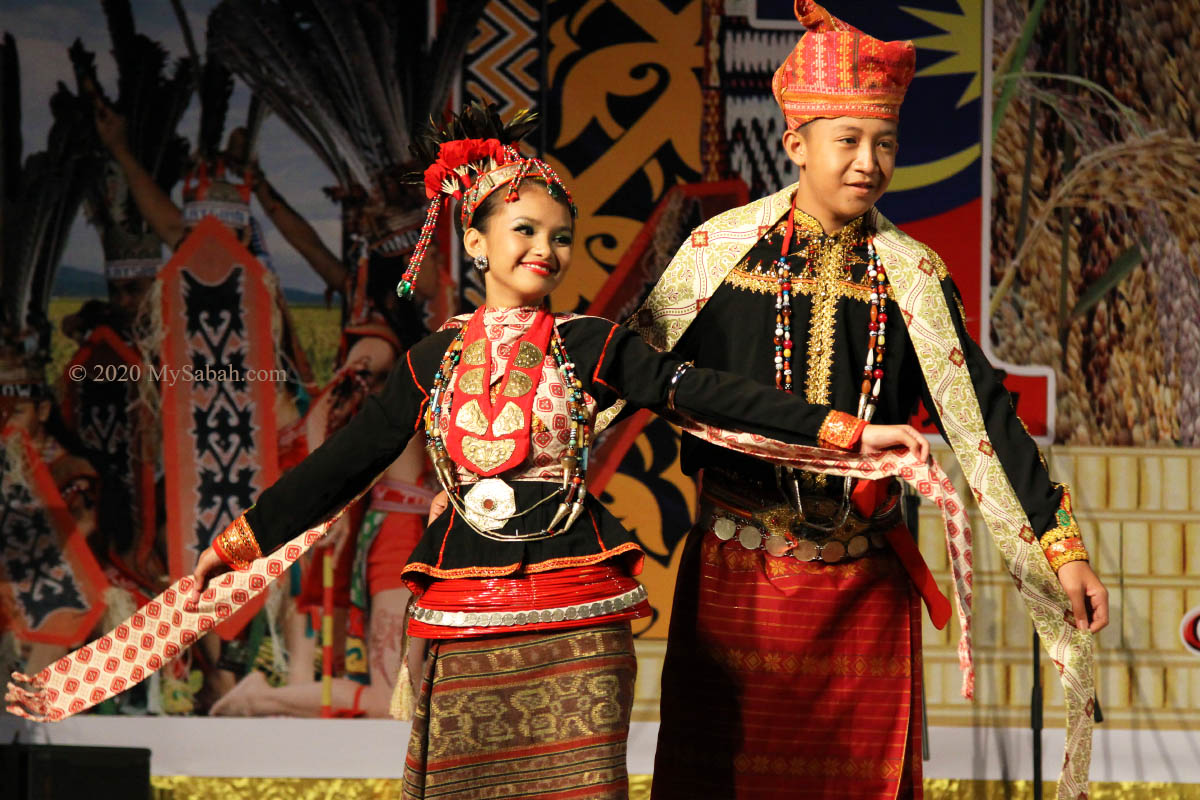
In English, linangkit is sometimes referred to as needle weave or tapestry weave. a technique closely resembles the tatting or frivolite in Europe. Strips of linangkit are used by various native tribes to decorate and join the seams of their clothing. Different ethnic groups have different patterns and colours of linangkit.
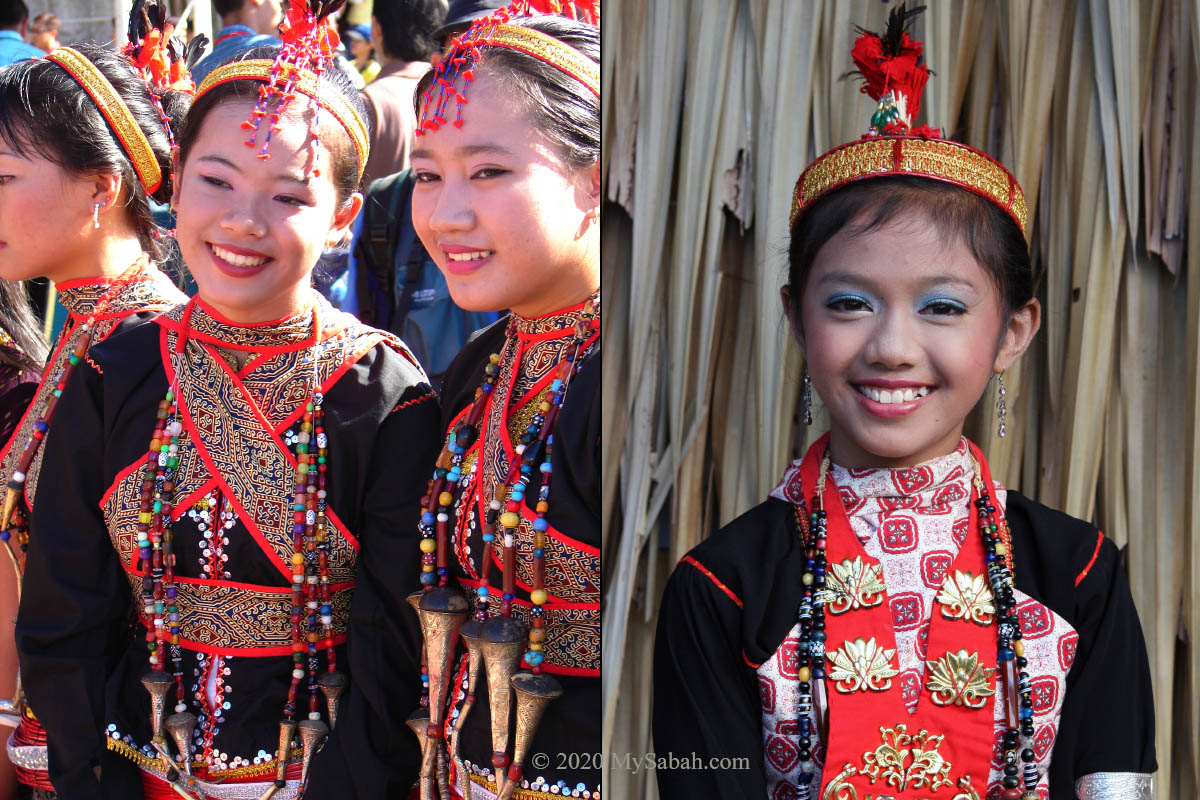
The traditional costume of Dusun Lotud, be it the long sleeve ceremonial attire or short sleeve version, is just gorgeous. In fact, this costume is one of the favourite choice for contestants in Unduk Ngadau beauty pageant (Harvest Festival Queen) during Kaamatan (Sabah Harvest Festival).
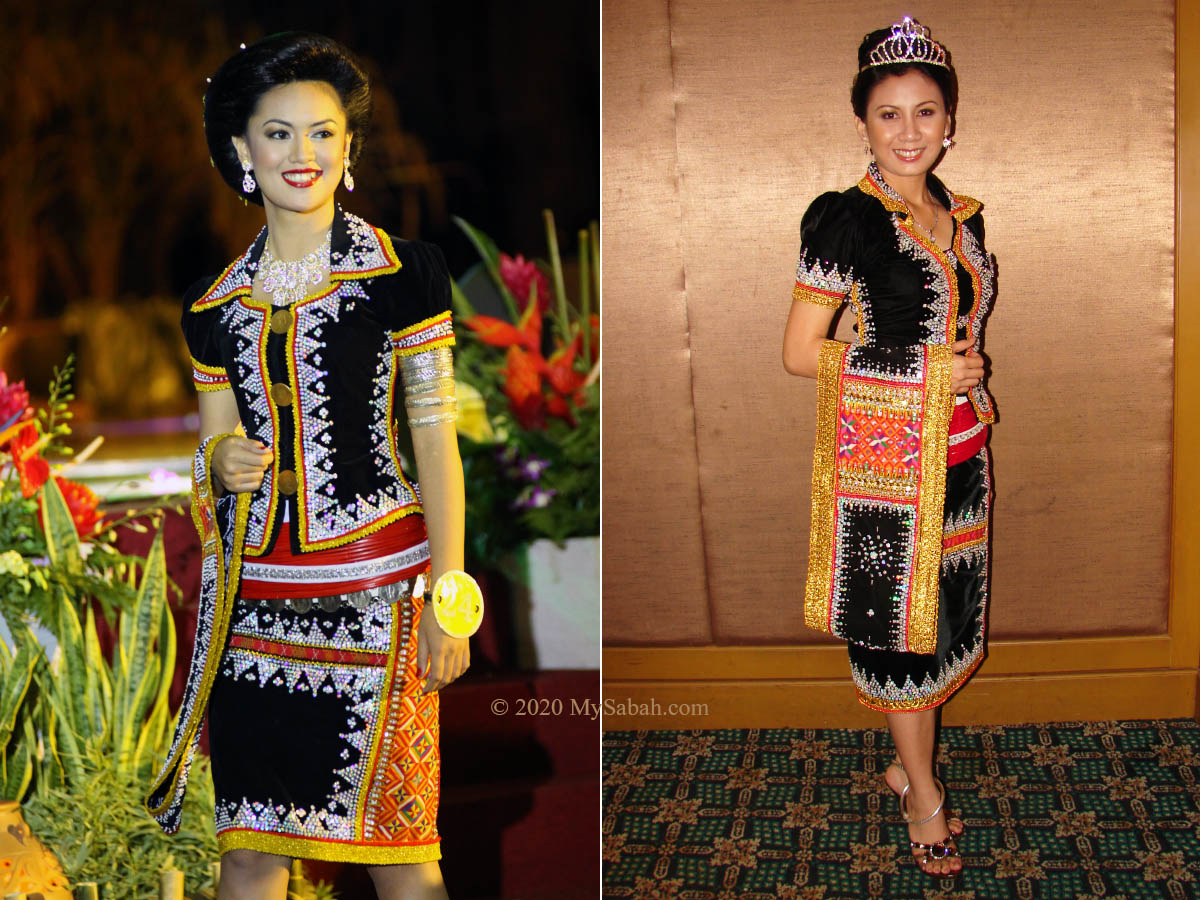
Man is wearing headgear called sundi can be folded in different ways. When two points stick out, the weaver has two wives and so on (now you know!).
3. Rungus
Rungus of northern Sabah is considered as the most “traditional” and unique tribe among all Sabah indigenous groups. Rungus women wear a dark bandeau with delicate hand-stitched patterns, a matching knee-length tube skirt and a slipover that drapes over the arms like sleeves. The narrow upper zone of the bodice is decorated with horizontal bands filled with floating weft and/or embroidered motifs. The lower part of the bodice is embellished with vertical bands.
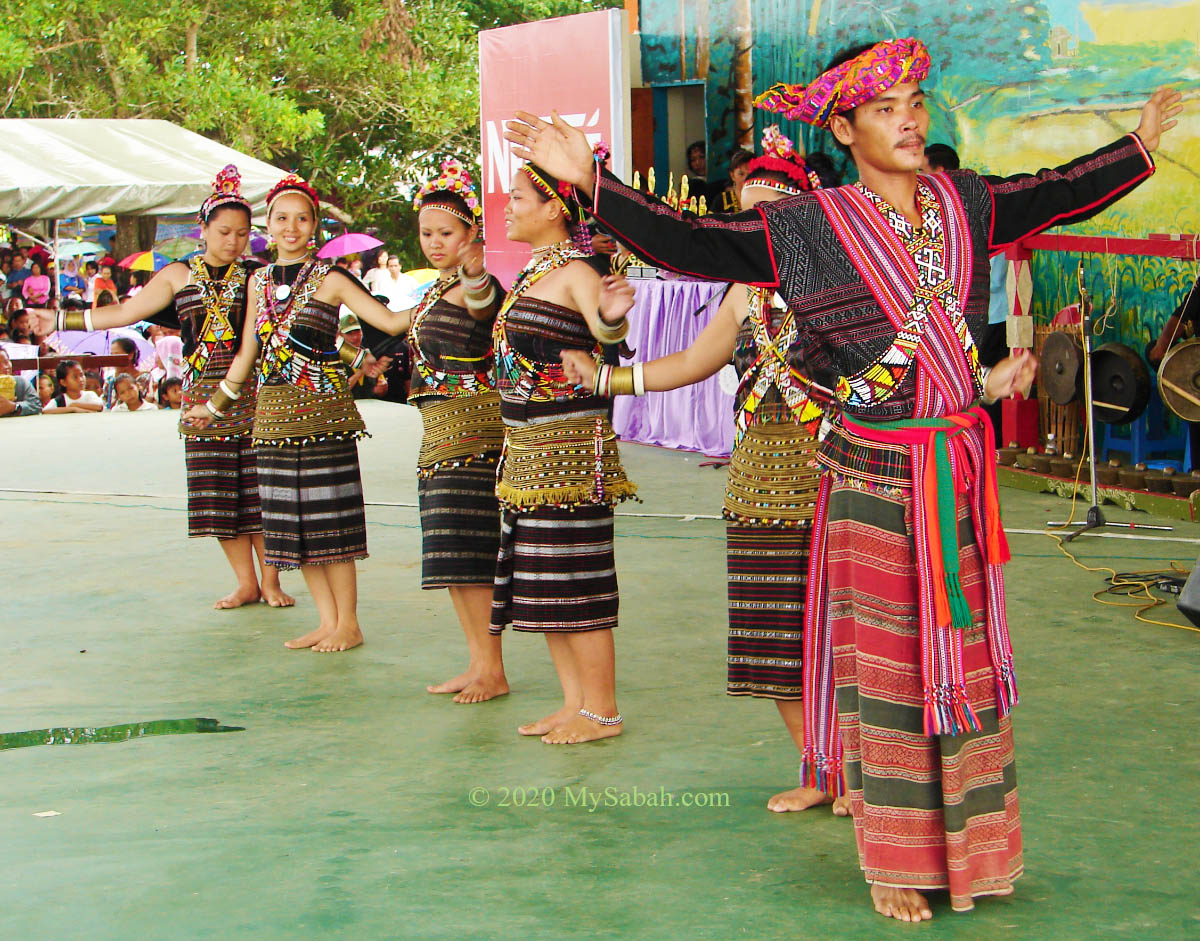
The women’s hair is pulled back in a neat bun and decorated with a titimbok (a multi-colored floral headpiece), sisingal (a thin band of beads tied together around the forehead) and rampai (a hairpin which has two or three rows of folded pieces of colourful cloth strung together and which float down to the nape)
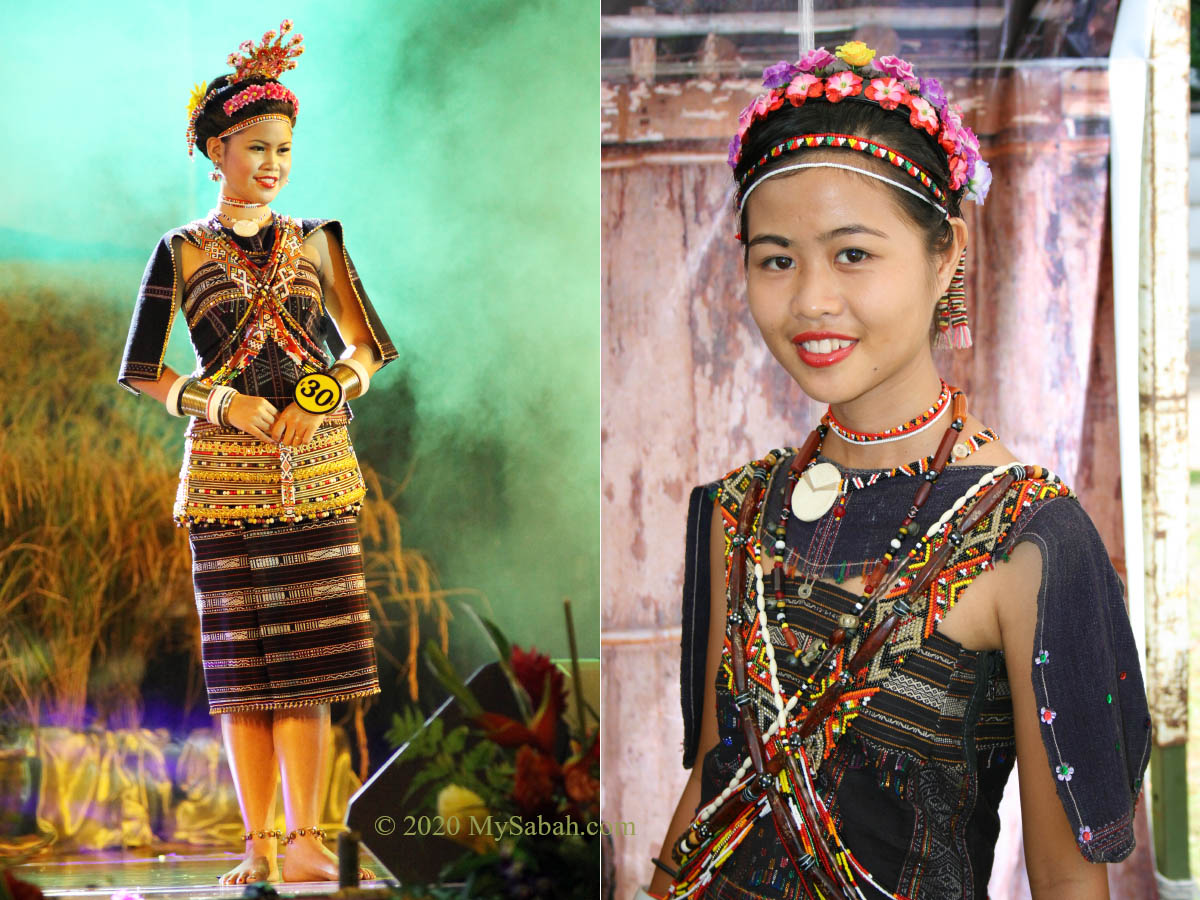
The dress is “musical” too, by having many tiny brass bells attached to bottom hem line of their skirt, making delightful tinkling sounds when they walk or dance.
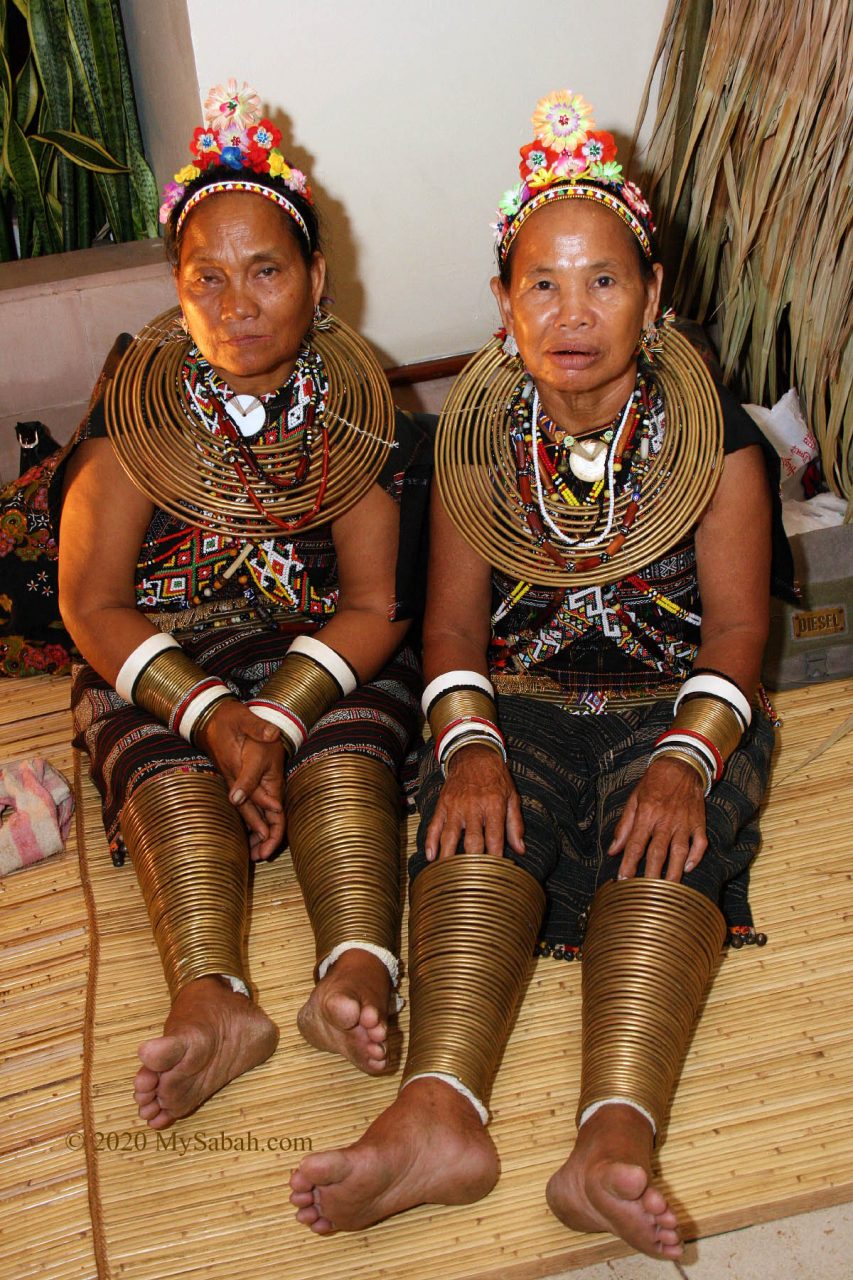
Some older Rungus women wear heavy brass ring necklace and legging. It’s a fading costume.
Ganggalung: discs of brass coil worn as necklace.
Lungkaki: tightly coiled brass ornament covering the lower legs.
The headgear of men is brightly coloured Kain tinohian (a.k.a. kain pis), a richly embroidered cloth with legendary creatures and takes four months to weave one.
4. Murut Tagol
Murut means “People of the Hill”, and majority of this third largest indigenous group of Sabah lives in interior. They were used to be fearsome headhunters in the past, and men preserve their wild warrior outfit until today (they prefer proper shirts anyway).
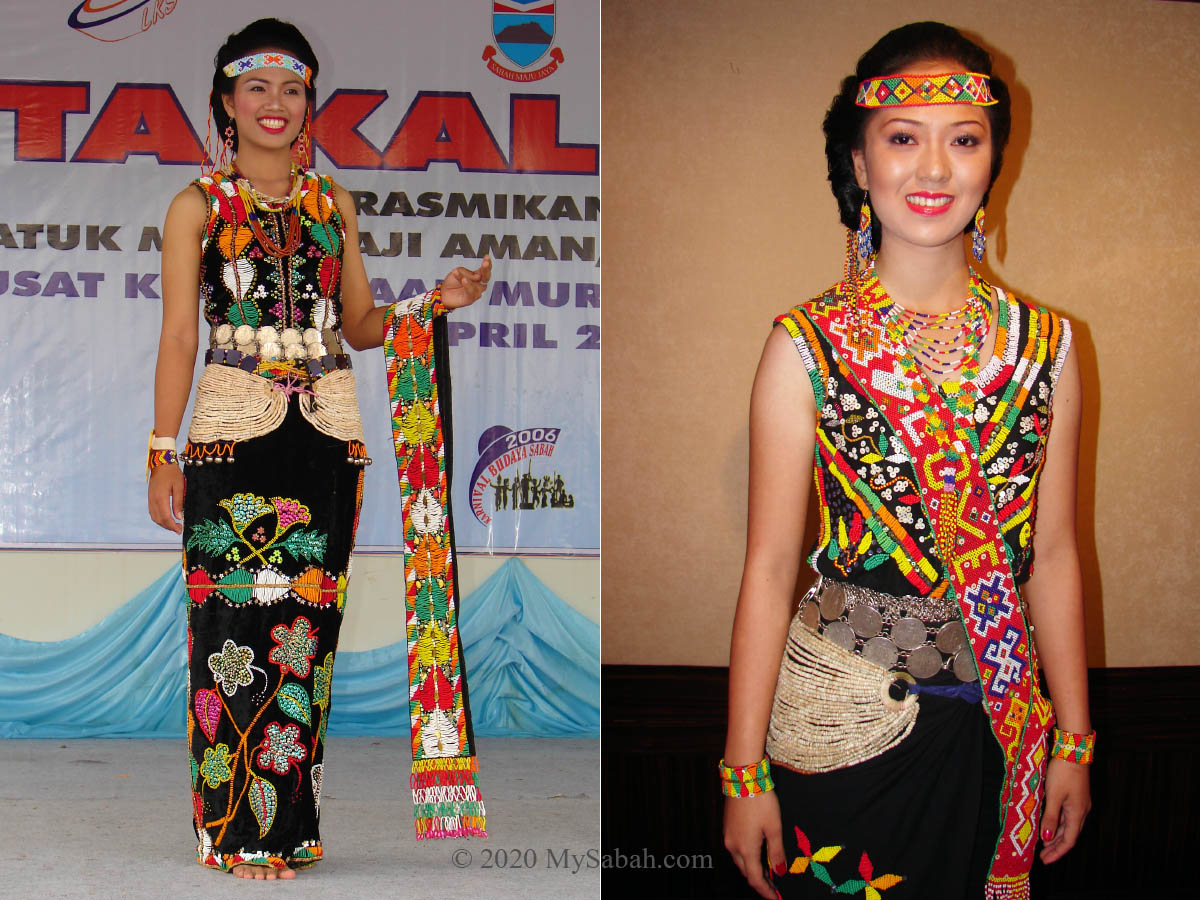
Murut has over 15 ethnic groups, and Murut Tagol is the most skillful for their weave work. Murut women wear black, sleeveless blouse and a long, black skirt decorated with colourful beads motifs of daily objects such as flowers, insects, animals and ferns. Female skirt has hip belts made of chained white round seeds collected from Job’s Tears plant (Coix lacryma-jobi).
The men costume is even more interesting. They wear vest, frontal and rear flaps made of tree bark. First, barks of the tarap or tamarang (timadang) trees (Artcocarps tamaran) are peeled from the trunks, soaked in stream for days to soften them up, then it is pounded, washed and rinsed, and lastly dried under sun for the fabric. However, man costume is too “sexy” so they also wear short pants for more cover.
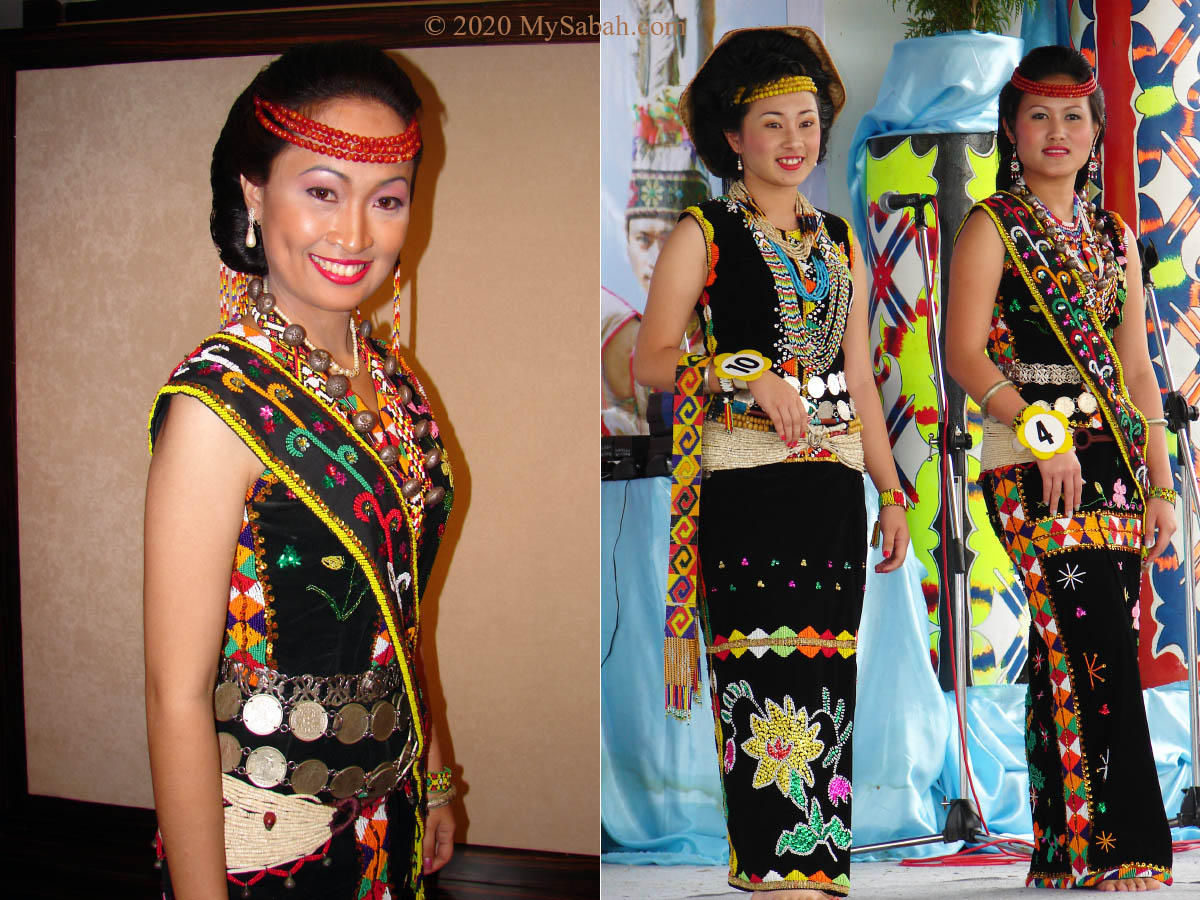
The headgear of Murut may be adorned with long tail feathers of Great Argus Pheasant. To see more Murut costumes, you may check out Kalimaran Festival which is held annually in Tenom.
5. Bajau Sama
While most Kadazandusun and Murut people use black as the base colour, Bajau goes bold with striking colours such as yellow, red, green and blue. This also reflects in their multi-coloured and elaborate floral motifs in their crafts, an element greatly inspired by Islam. Bajau in Kota Belud town is also known as Cowboys of the East due to their mastery in horse-riding skill.
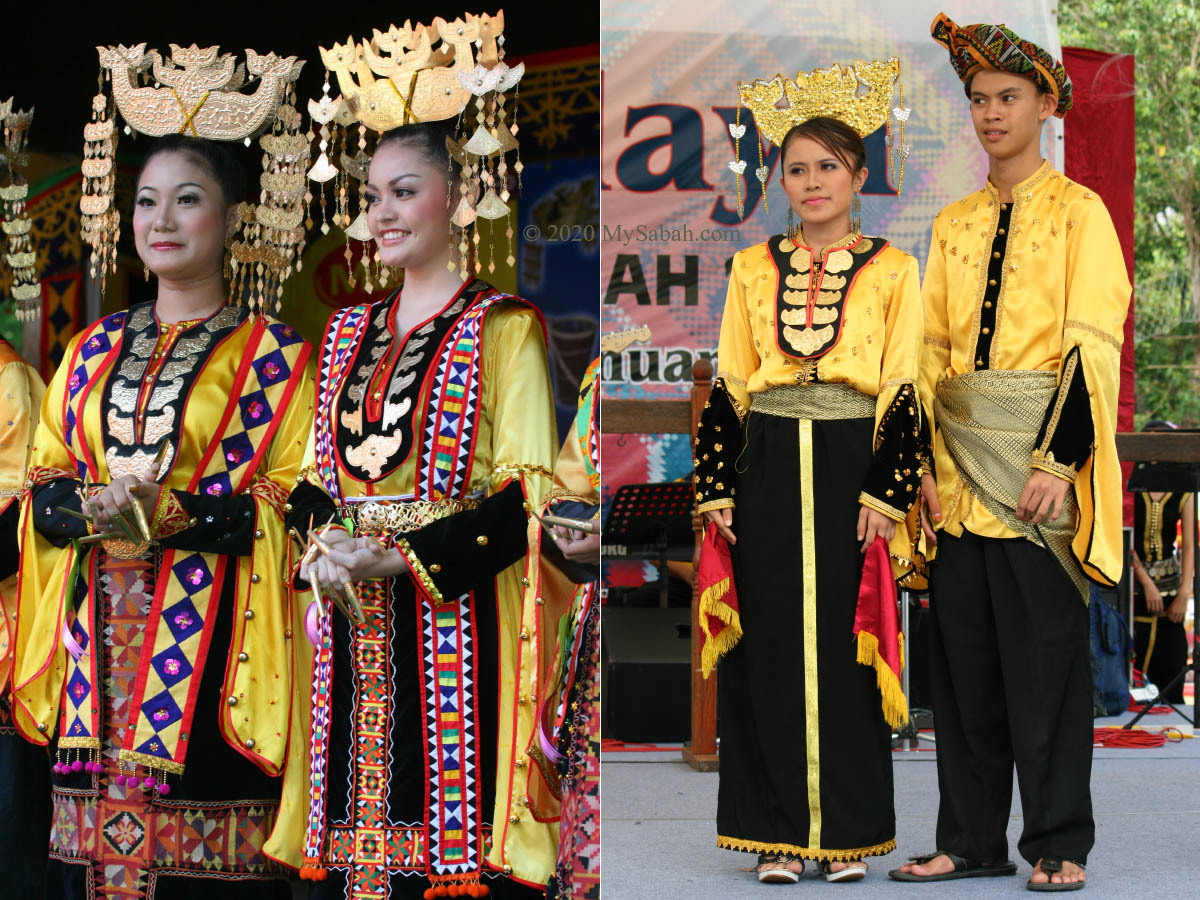
Bajau women wear an unusual headgear called sarempak, which is a two-pieced head decoration in the shape of a ship made of gilded silver or modern substitute. Small ornaments dangling down from both ends of sarempak are called garigai. Next is the brightly colored satiny blouse usually in yellow. The flared sleeves show the cuffs of an underblouse in contrasting hue.
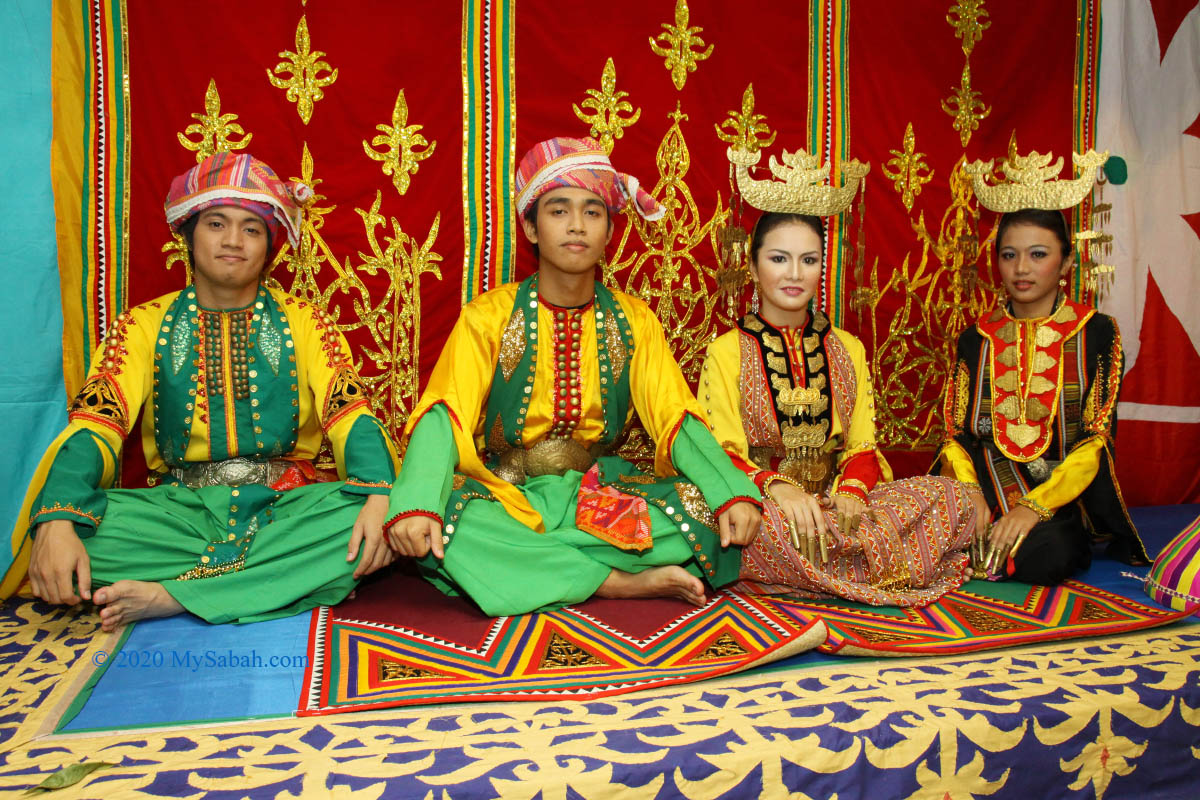
Shining metallic accessories complement their traditional costume really well. Bajau women covers the front from below the neck to waist with beautiful mandapun, a flat collar-ornament accentuating the neckline decorated with stylized leaves in silver, goldleaf or substitute. To add more colours, long and wide band of linangkit embroidered panels (berangkit in Bajau) are sewn into their long black wrap-skirt.
Bajau men wear the traditional headgear called kain dastar, which is also used in women skirt. See more their vibrant culture in Tamu Besar Festival which is normally held in October in Kota Belud town. They even dress up their horses!
6. Kadazan Papar
I wonder who designed the traditional costume of Kadazan Papar. It’s so cute and “flowerish”. The lovely girl costume looks neat and modern. Kadazan Papar women wear a short jacket with gold or silver buttons over a white blouse, and their knee-length black skirt is decorated with a horizontal and vertical cross-stitched panel lined with gold thread. Gold or silver trimming is used on the seams.
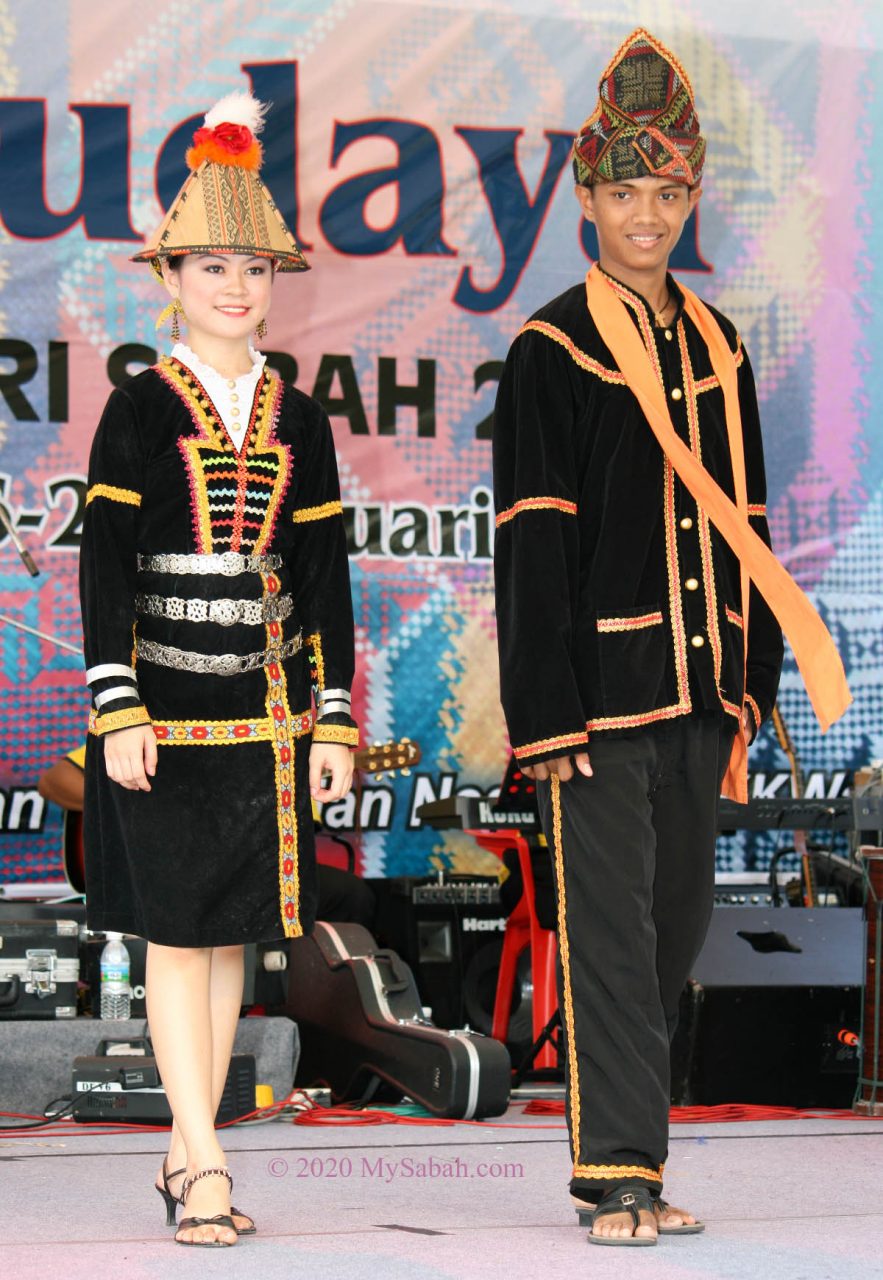
The mini conical hat is made of fine bamboo strips and features coloured feather-down or artificial flowers at the top to show the wearer’s marital status. Feather-down for the single lady and flowers for the married woman. Another hint is the silver belt (antique British trade dollar), unmarried ladies wear four and married wear two.
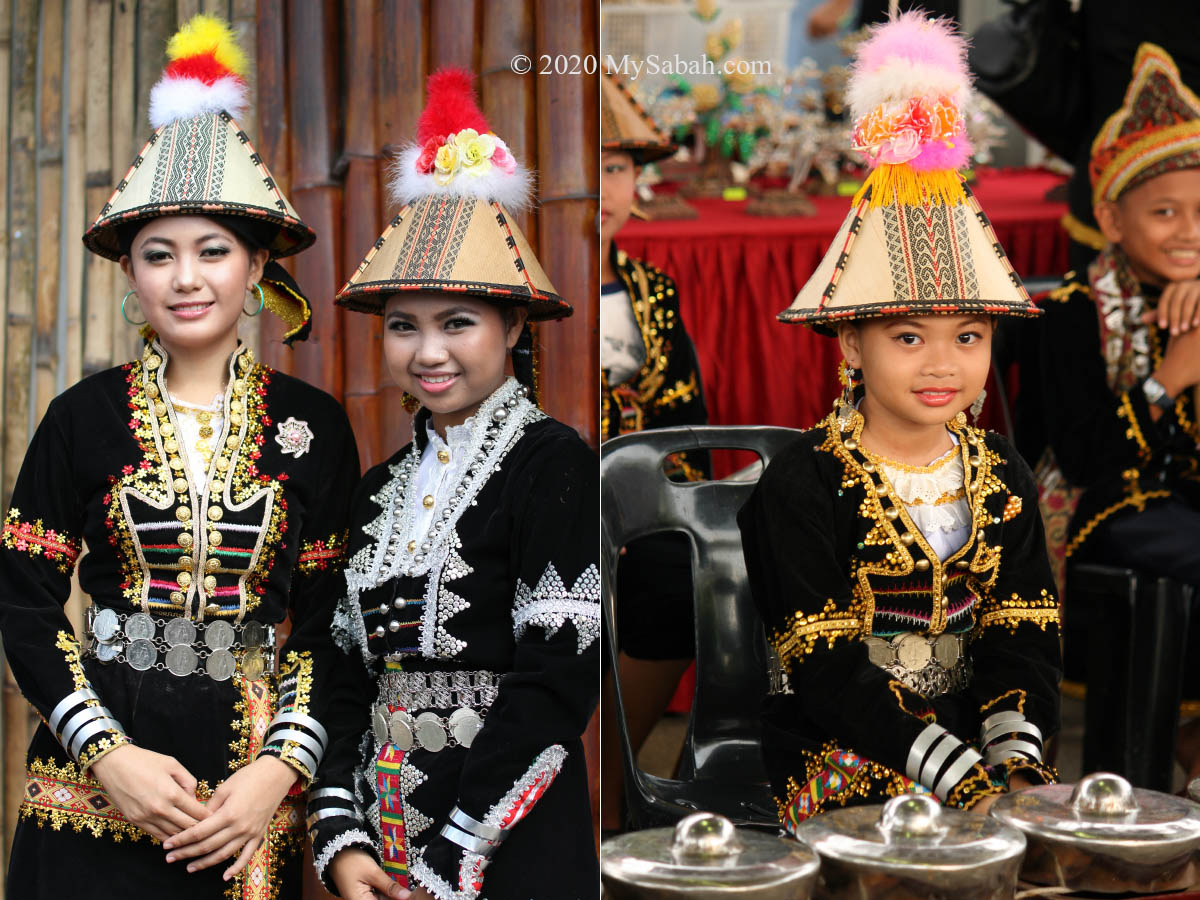
If no feather or flower, the woman is widowed, grandmothers or elderly ladies then.
7. Dusun Tindal
Influenced by culture of Bajau Sama in the same district, Dusun Tindal is also the most colourful Kadazandusun sub-ethnic group. Just look at the girl costume, 3-colour slashed and flared sleeves from the elbows, rainbow-like beads girdle around the hips, and also embroider on their arms and hem of the skirt. To add more colours, in formal occasion they also carry sunduk, a multi-color hood with embroidered border.
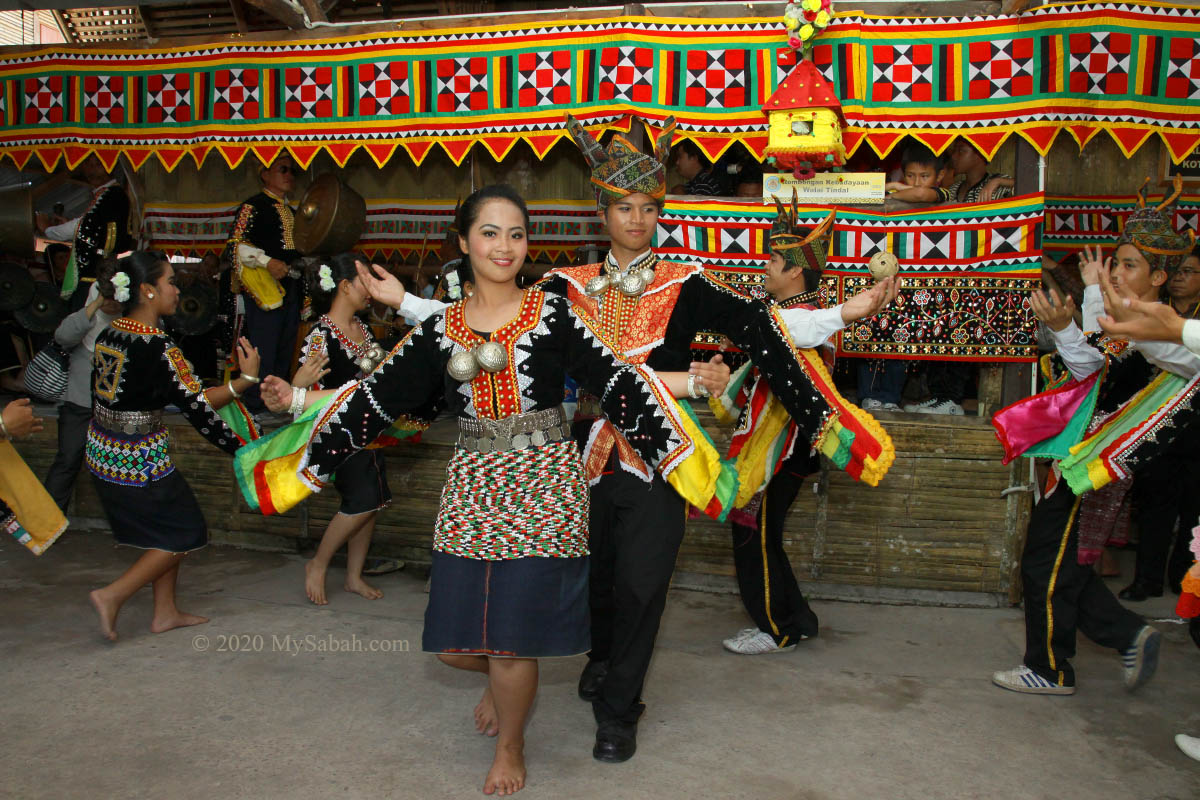
On top of colours is extensive use of metallic elements: line and line of gold or silver trimmings and sequins are sewn into their blouse and skirt, two to four Himpogot (or Simpogot) silver-dollar chain belts on the waist, one or more of kuapu (a round embossed silver tobacco container made by the Bruneis) are worn around the neck on a silver chain.
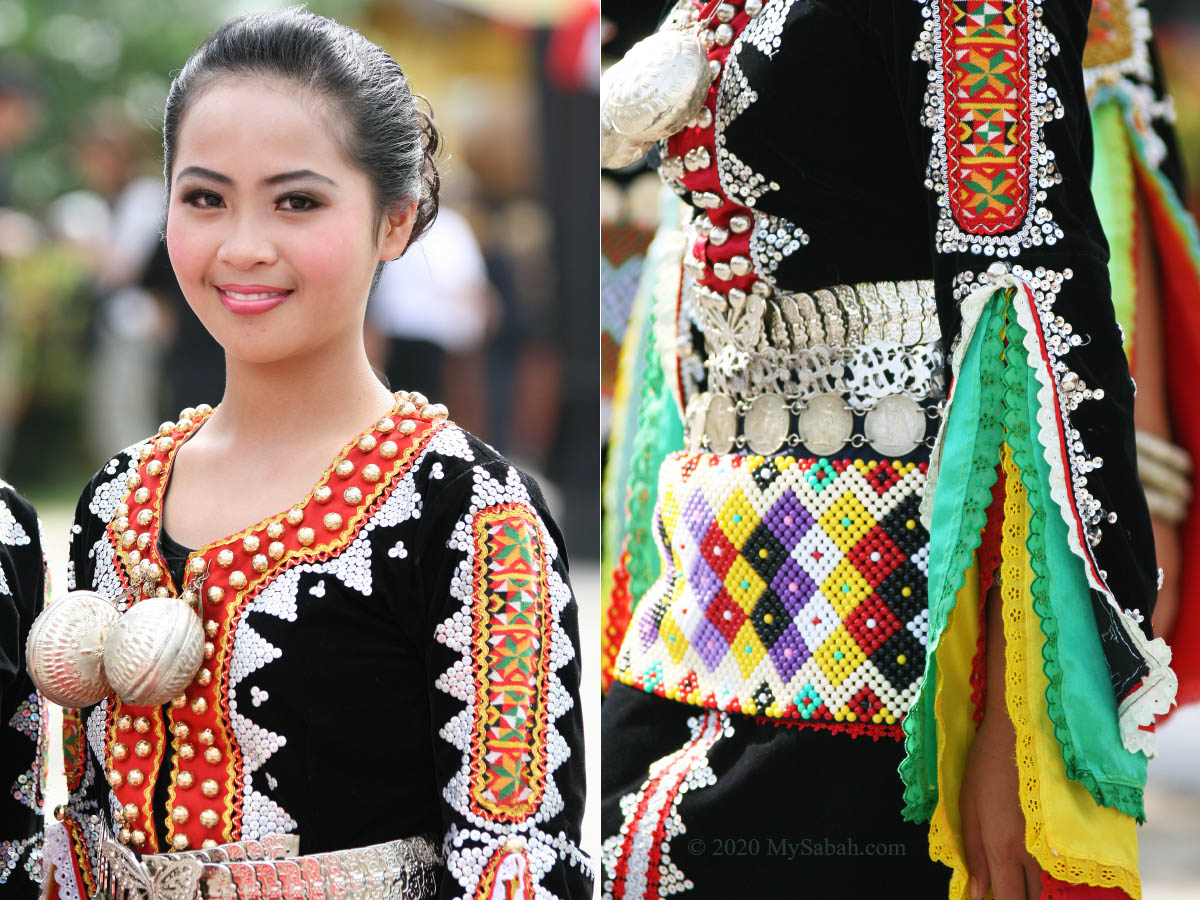
Dusun Tindal has brought the creativity of native fashion to the next level. You would be surprised that Dusun Tindal extracts fibre from a wild banana or pisang lanut (Musa textilis) which is processed into a coarse yarn for weaving their skirts, jackets and headwear.
8. Sea Bajau
While Bajau Sama in West Coast of Sabah has the best horse-riding skill, Sea Bajau (or Suluk) in East Coast is an expert of seafaring. Also known as the Sea Gypsies, Sea Bajau spent most of their time on the boat and sailed around the sea of South East Asia. Now they are not as nomadic and many have called Sabah their homeland.
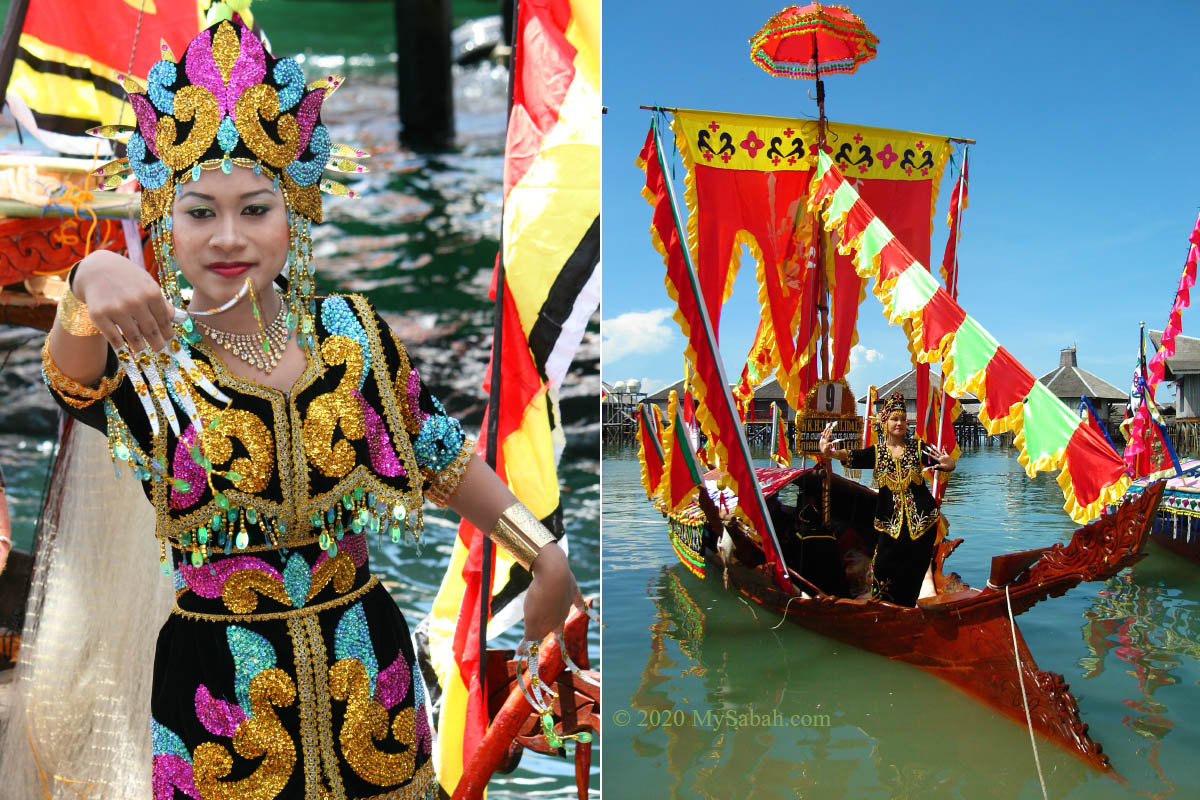
Similar to Bajau Sama, Sea Bajau is also a fan of bright colours. Their dresses are almost fully covered with colourful patterns, and gold / silver trimmings, sequins and embroidery. Sea Bajau dancers wear long gold or silver fingercovers, to show their fingers dance.
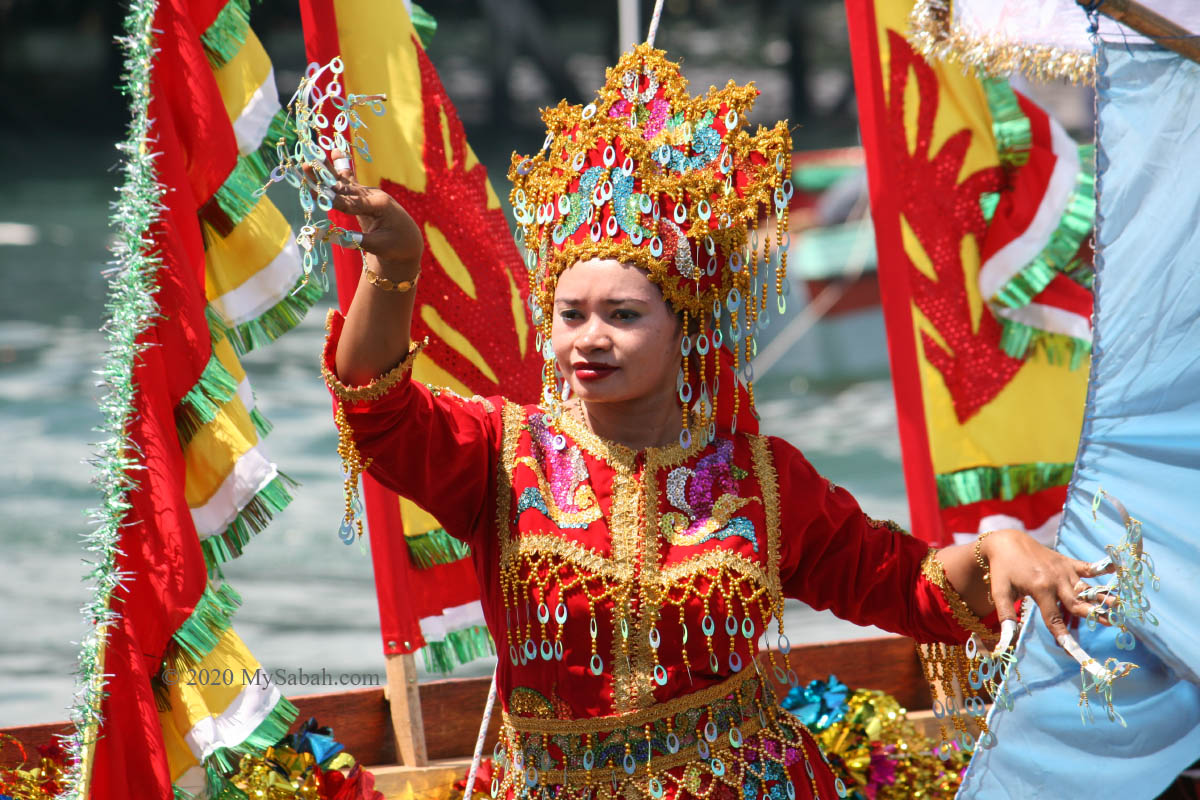
Backed by beating of drum and kulintangan (small brass gong) music, the dance of Sea Bajau is one of the most mesmerizing in Borneo. They shake and move every part of their bodies, combine with rich facial expression to dazzle you, even to a seductive level. To see more of Sea Bajau, don’t miss the Lepa-Lepa Festival in April every year in Semporna.
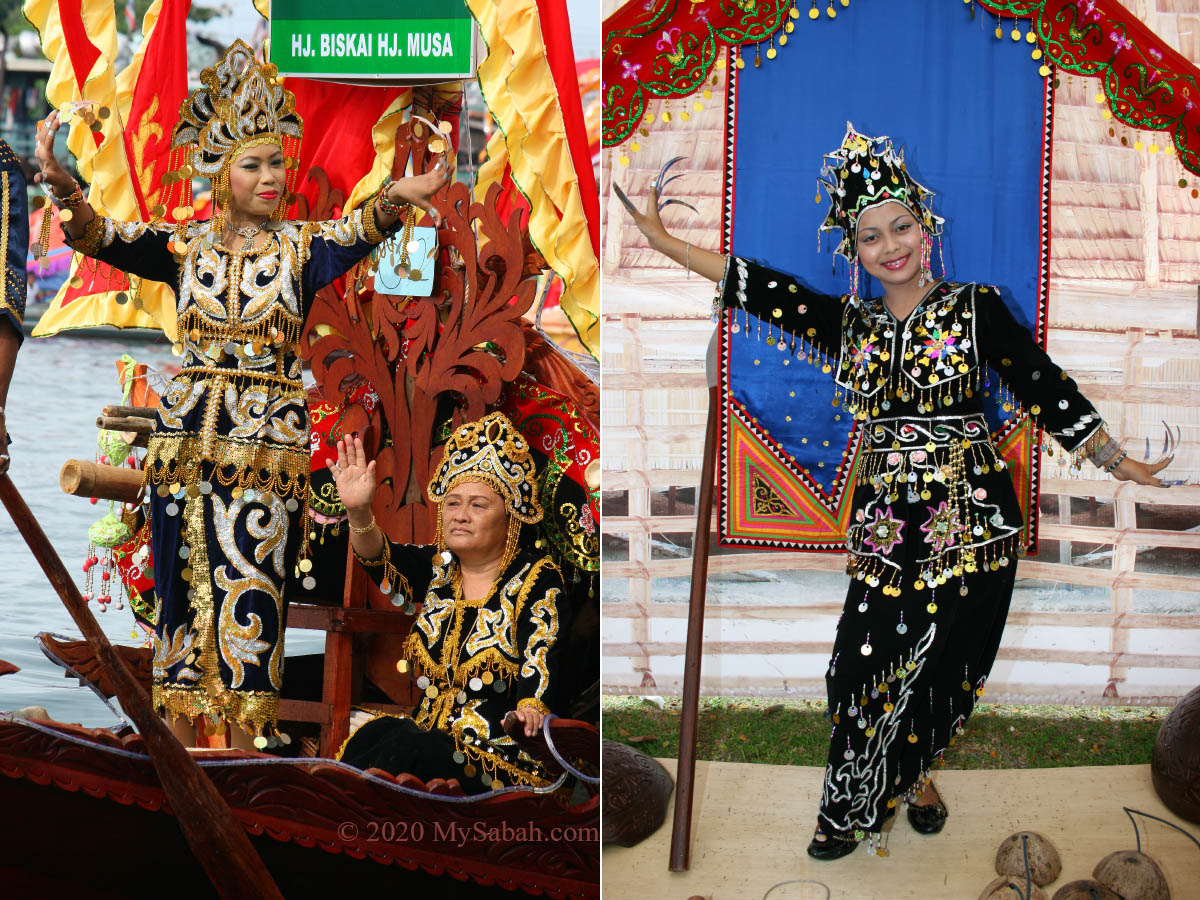
9. Dusun Lebou
Dusun Lebou (or Lobu) is a sub-ethnic of Kadazandusun lives in Sook (in Keningau district of Sabah interior). Their big woven cloth (called Binaduan) takes a month to weave and consists of different Rungus motifs and even some Dayak motifs from the southern part of Borneo. The complete costume is 2 pieces of woven Binaduan sewn together to create the front and back covers. Binaduan is used in skirt too.
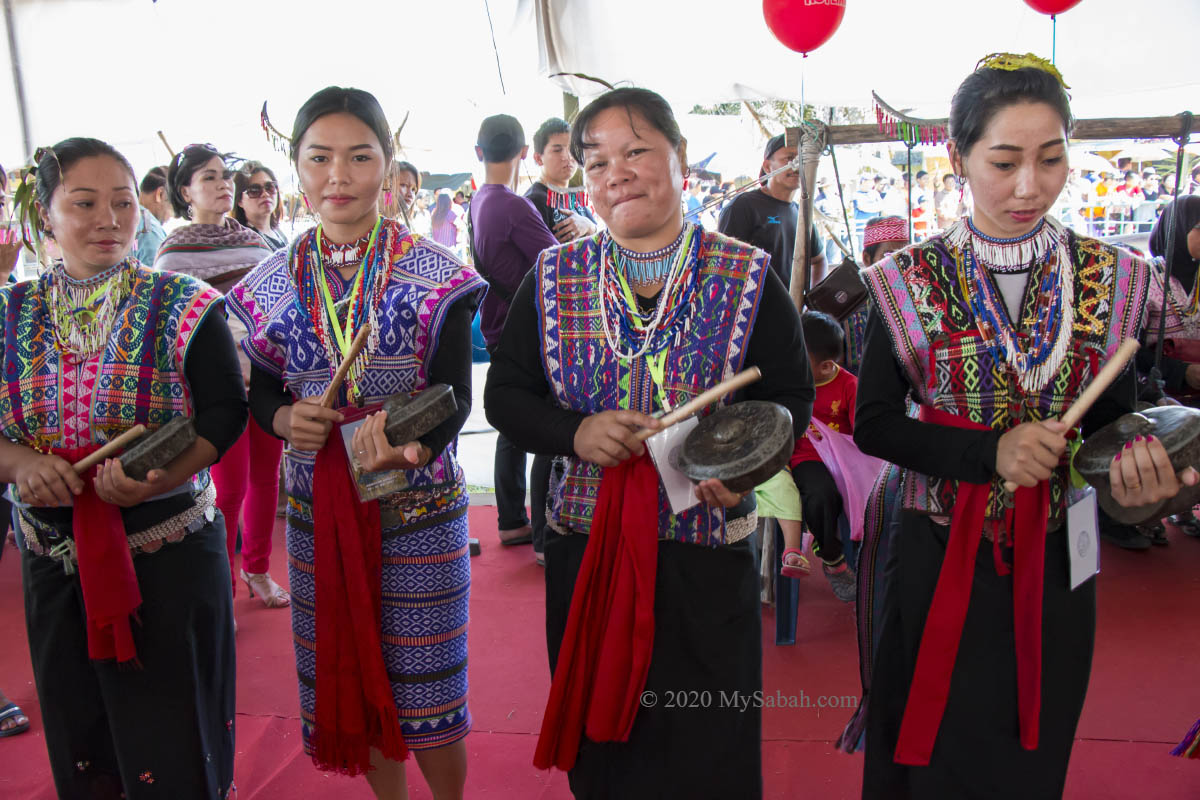
The size, design and complexity of Binaduan is simply astonishing. Men’s costume has a finer motif called Inambau. Unfortunately, the last person who knows how to weave Inambau has passed away. The traditional costume of Dusun Lebou is complex and special, but this art can go extinct.
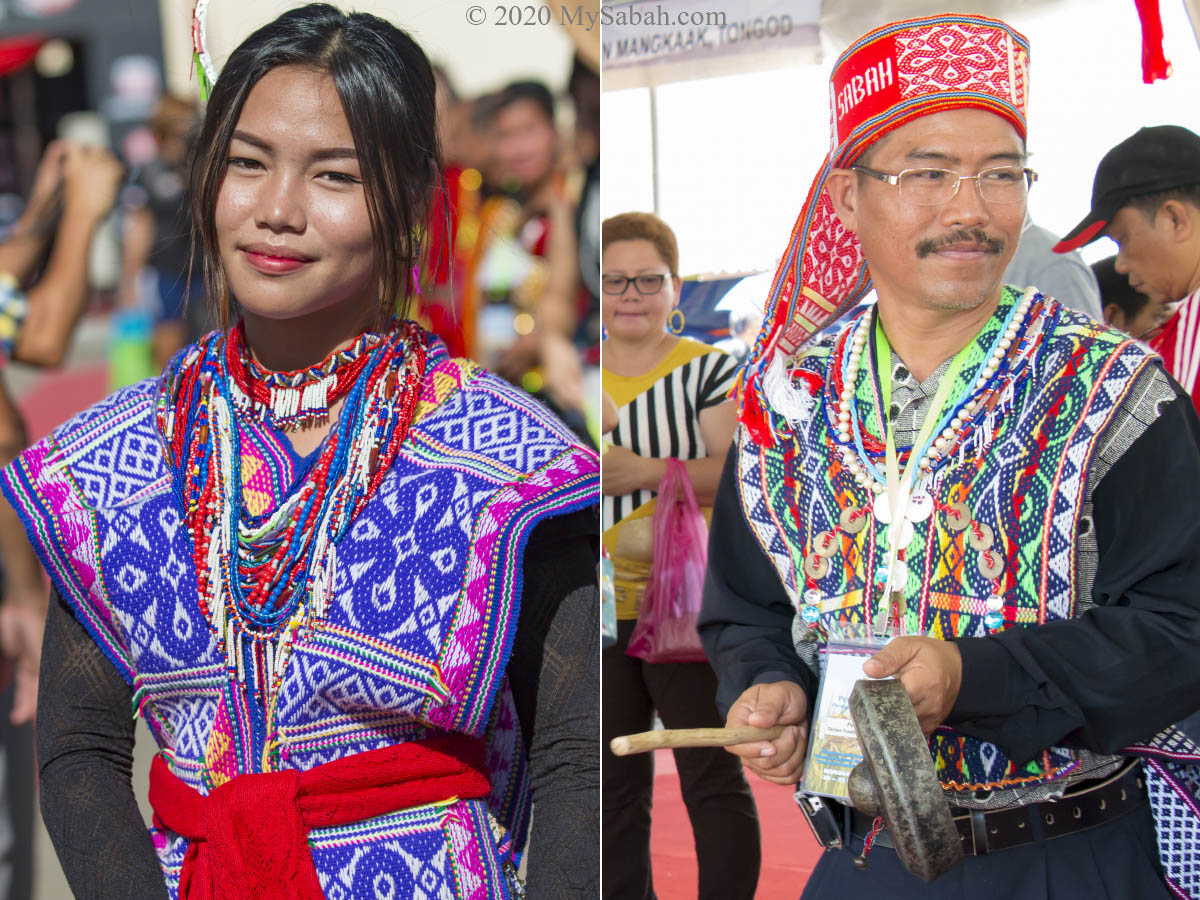
In old days, married woman with child was not allowed to be a Binaduan weaver. The story was:- a mother was too engrossed with weaving Binaduan from morning until night that she accidentally starved her baby. Devastated, she forbade any married woman to weave Binaduan. The ban was lifted later so more people can pass on this heritage.
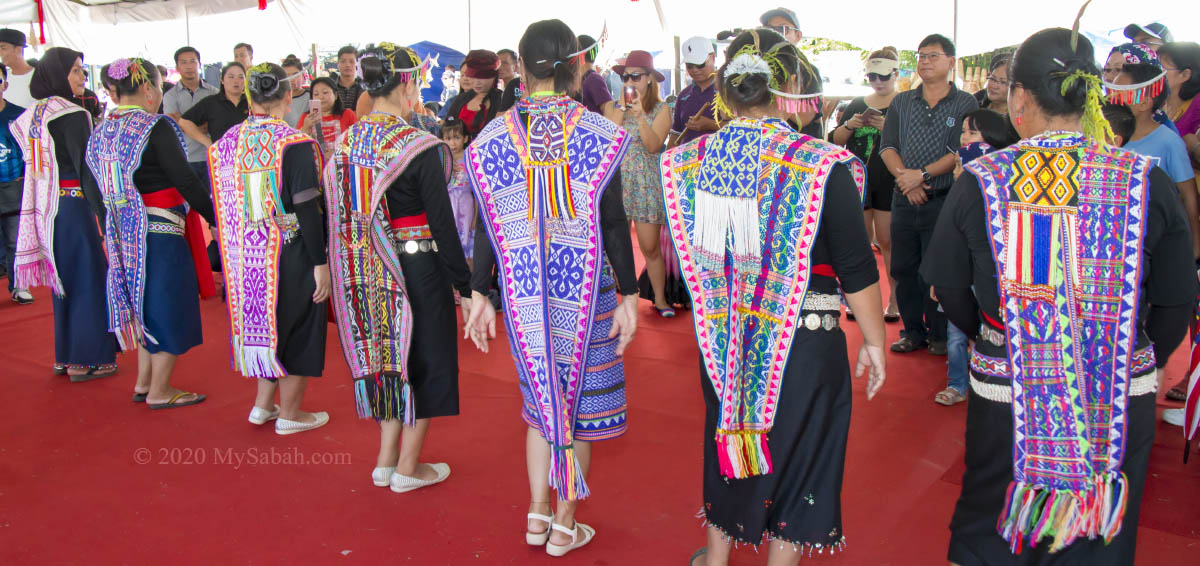
10. Lundayeh
Most Sabah Lundayeh lives in Sipitang, Tenom and Long Pasia. Different to other groups who mostly use black as main colour, white blouse and black skirt are the signature wear of Lundayeh ladies. Lundayeh men wear jackets made of tree barks called kuyu talun.
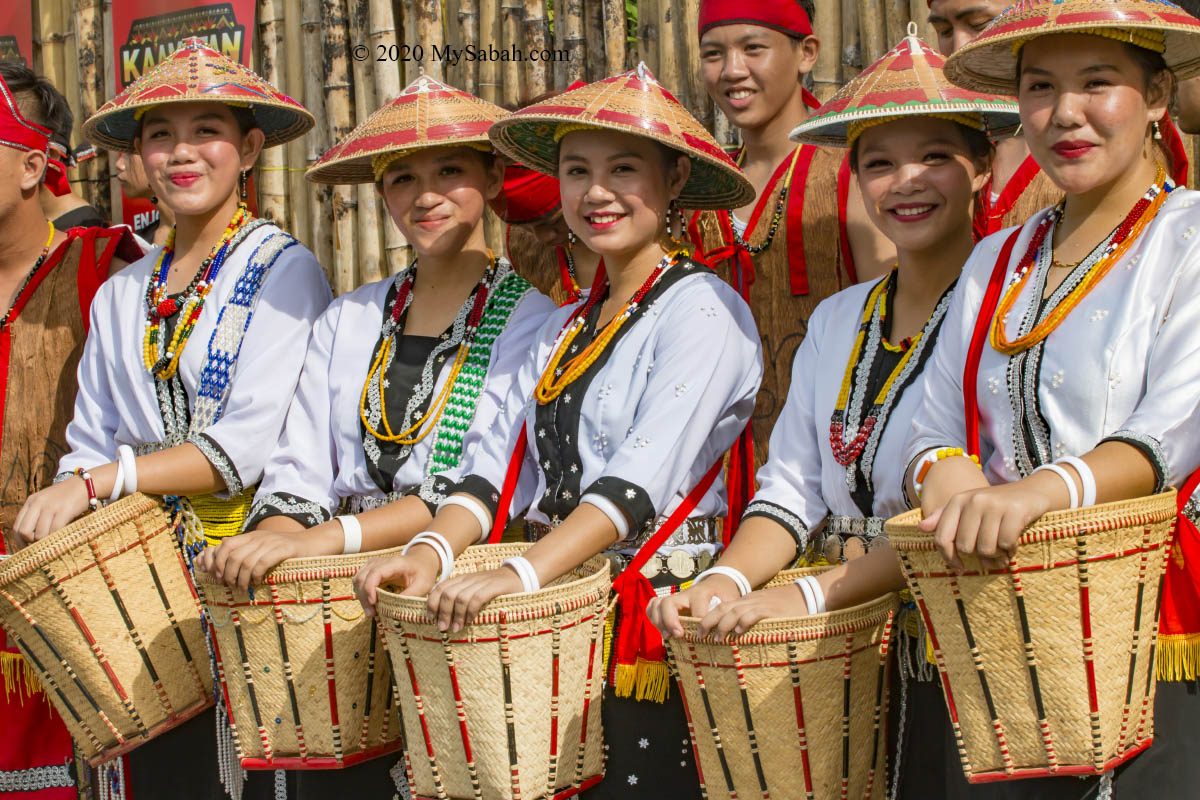
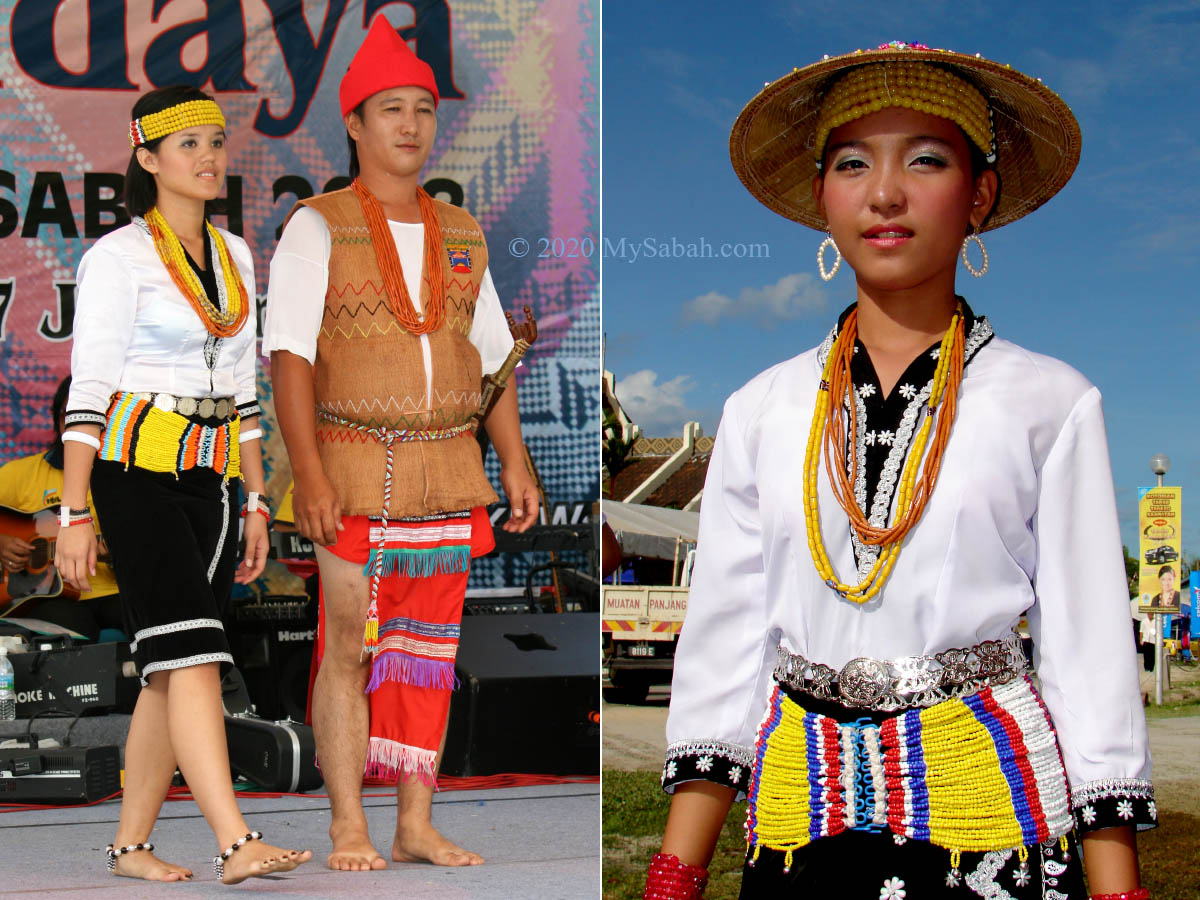
Bead cap made entirely of beads (it can be glass, carnelian and other materials) is worn by every Lundayeh woman. In the past, only upper class ladies could wear bead cap. Other key accessories are multi-strand necklaces, silver waist belts, and colourful bead girdle wrap around the hip. Overall it’s a very clean and stylish traditional costume.
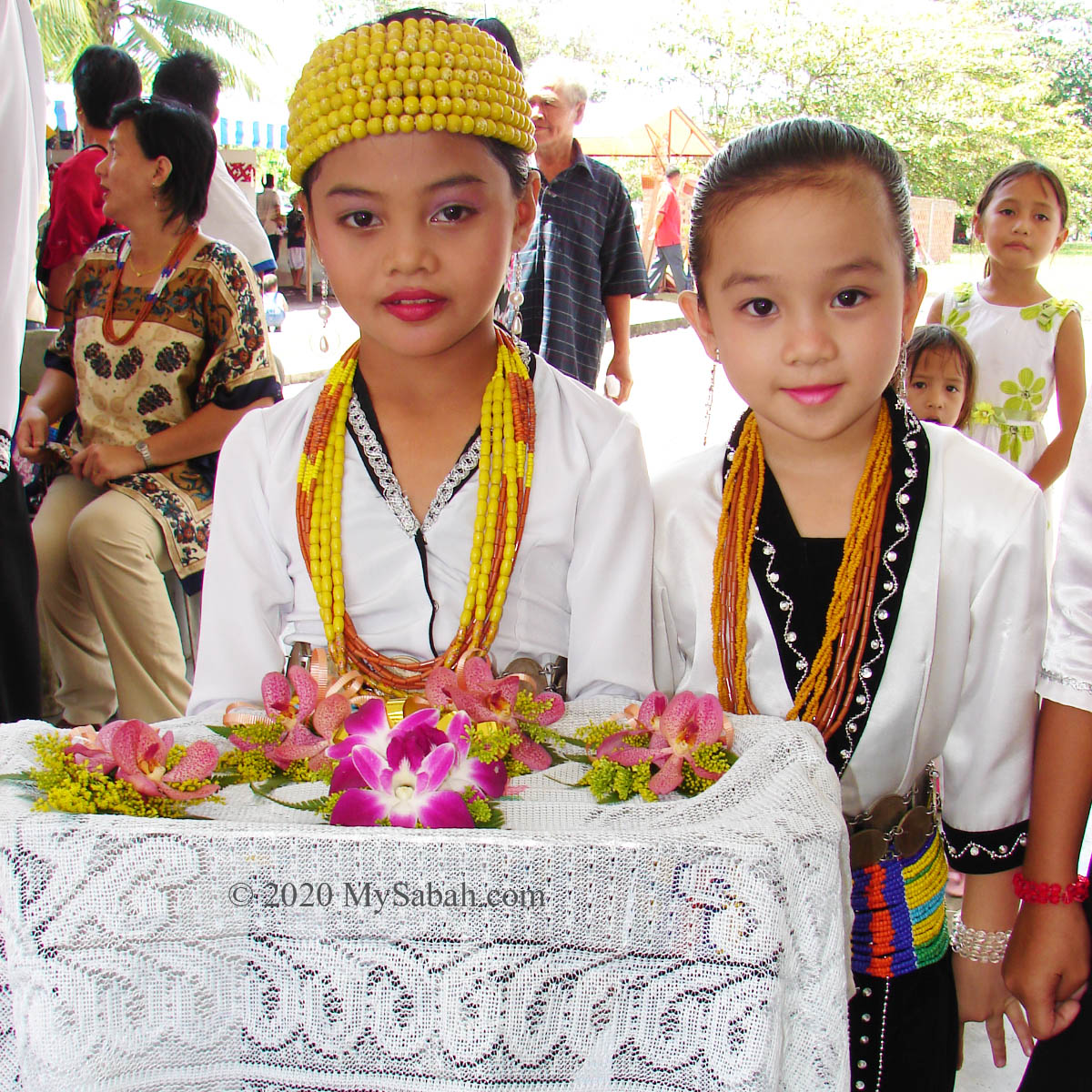
That’s all! Have you seen other beautiful costumes that desire to be featured here? What’s your top 10 list? Please share it in comment section below.
Now you can see that Sabahans are totally different breed of Malaysians. Put all 200 traditional costumes together and we can make a Sabah version of Wakanda movie.
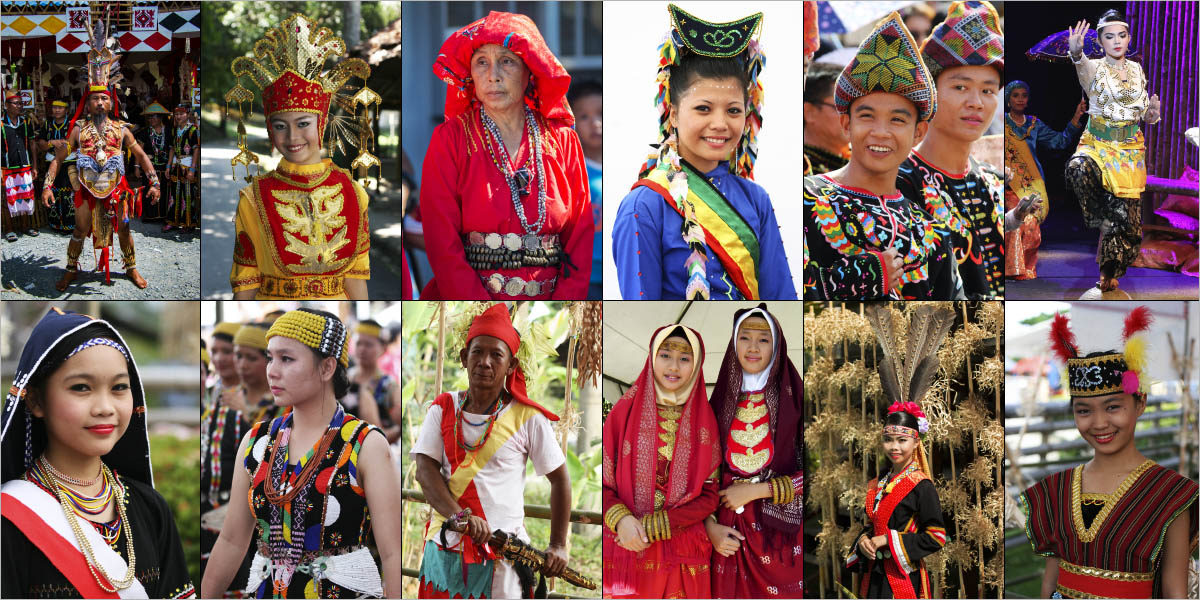
To learn more about traditional costumes of Sabah, you may visit Chanteek Borneo Indigenous Museum in Tamparuli, which showcases wide array of costume dolls, and it is awarded the title “The First Miniature Indigenous Museum” in the country by Malaysia Book of Records. Want to rent a traditional costume? You can browse Sabah Cultural Board website.
Reference Books
- “An Introduction to the Traditional Costumes of Sabah” – January 1, 1997, by Rita Lasimbang and Stella Moo-Tan
- “The Beliefs and Practices of the Kadazandusun-Murut Natives of Sabah” – 2017, by John Seet
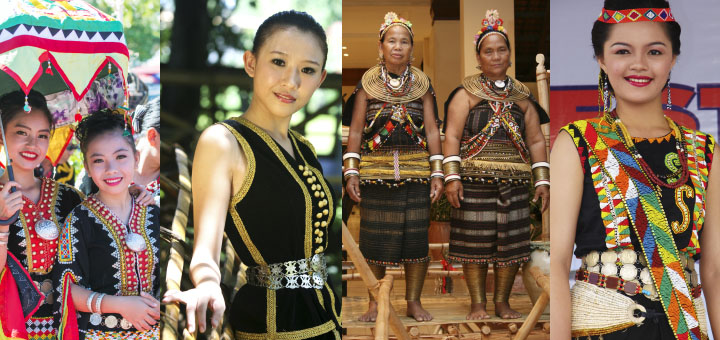
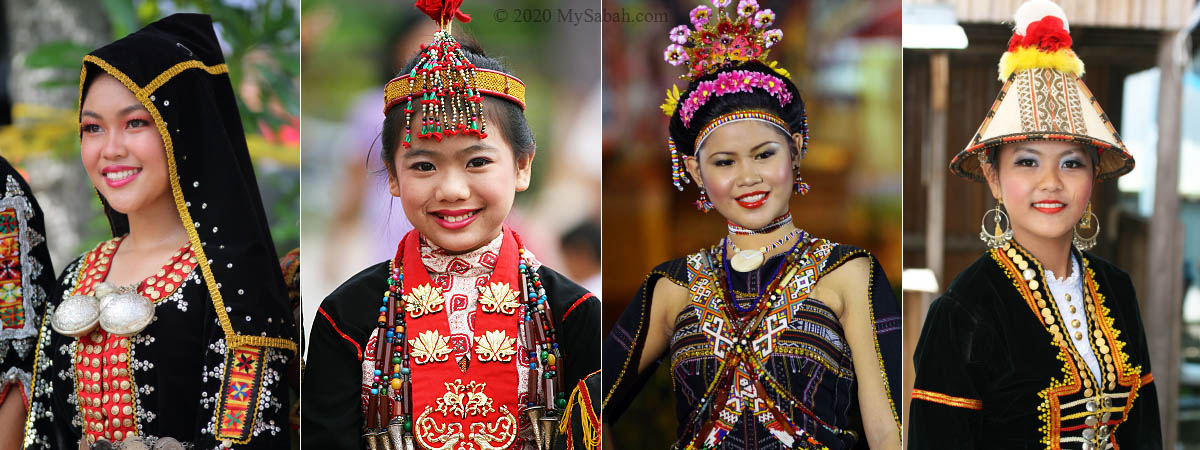
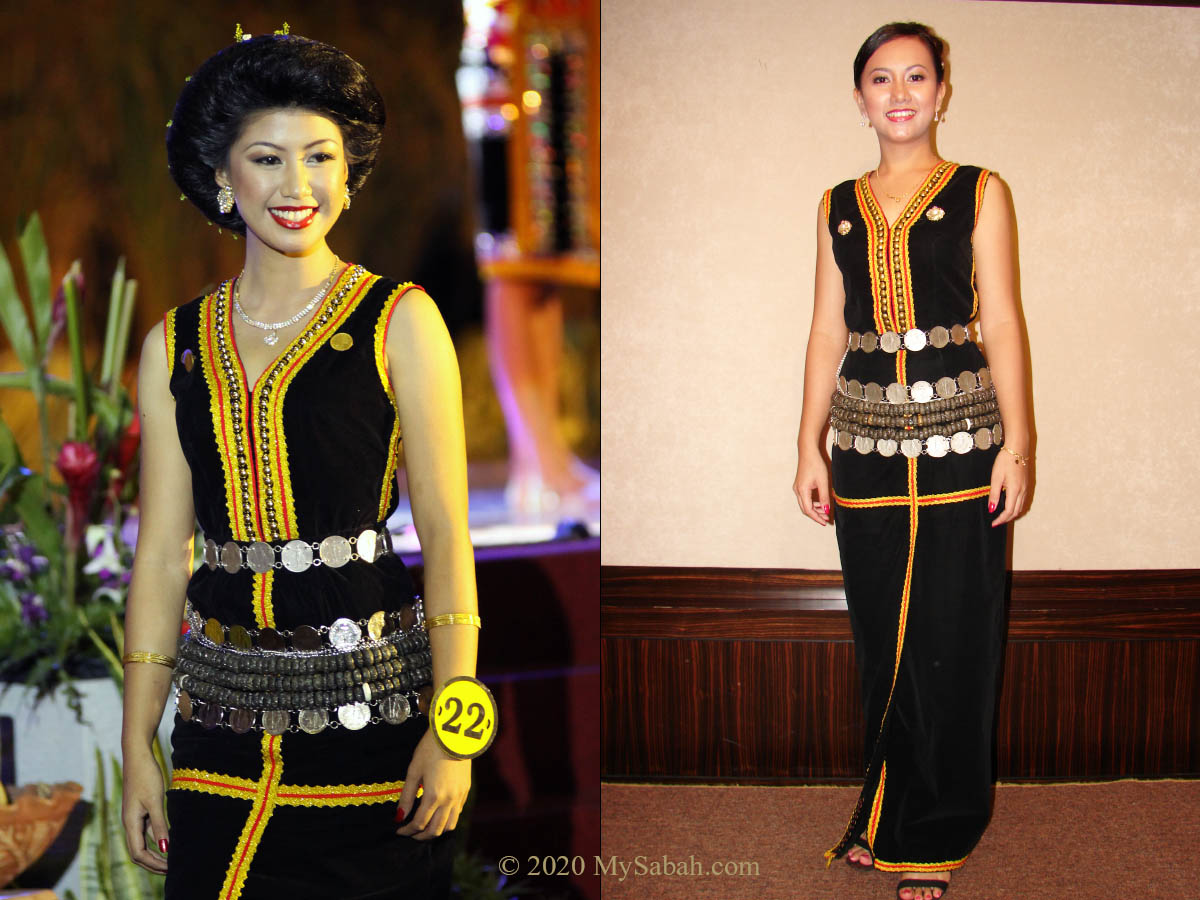

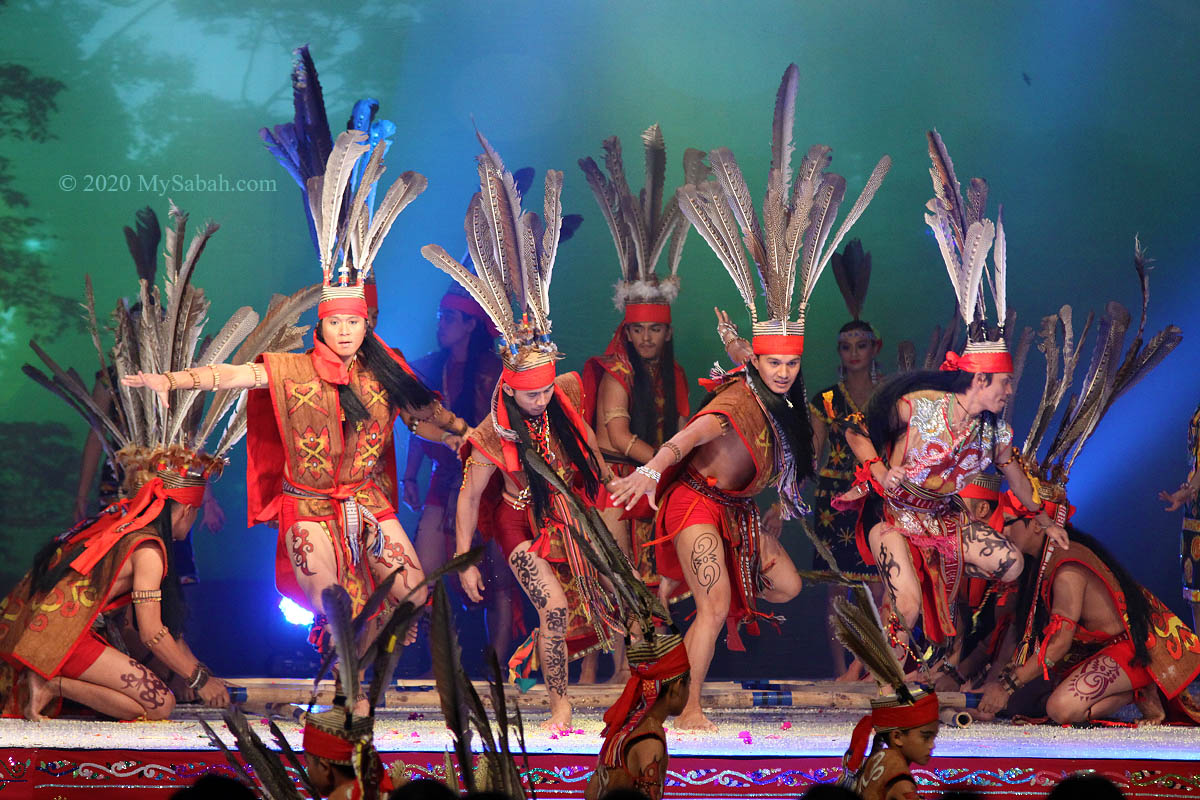
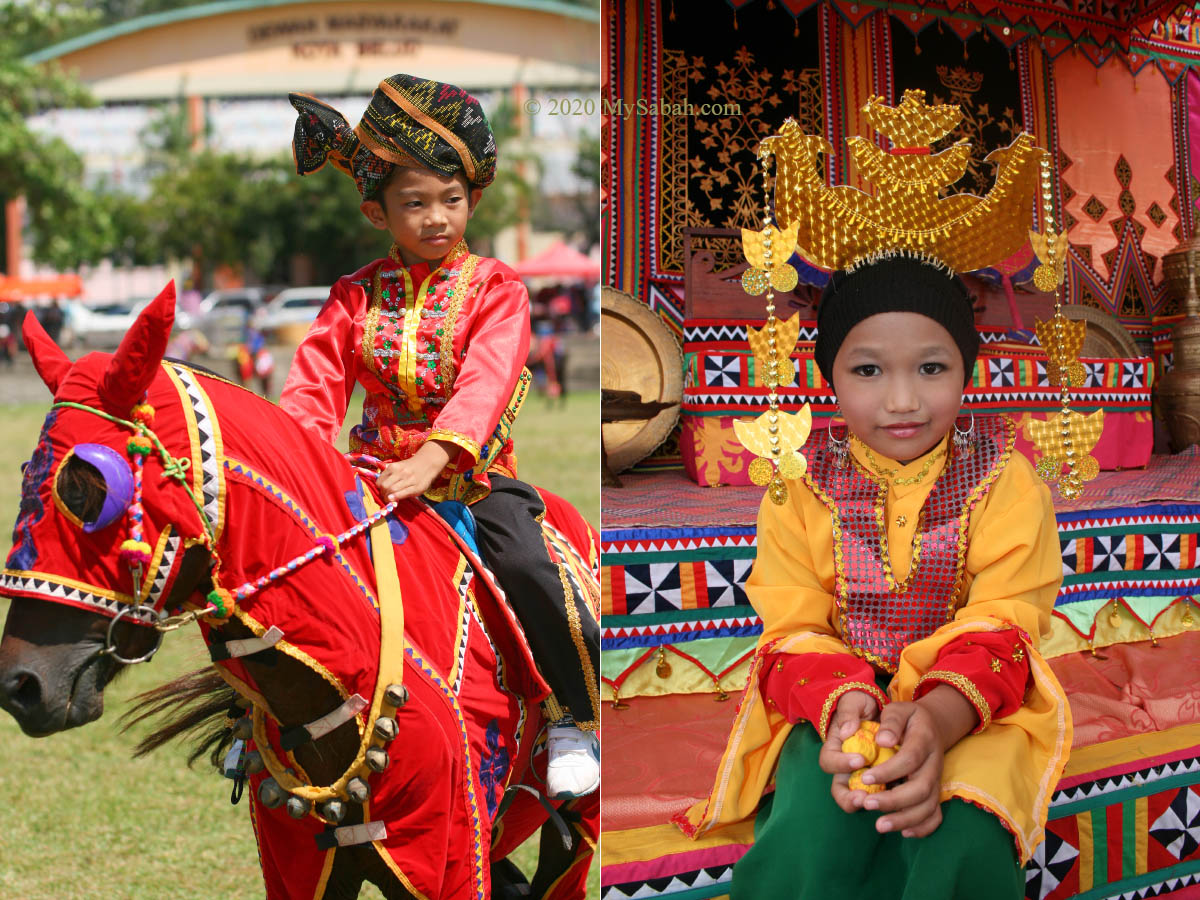
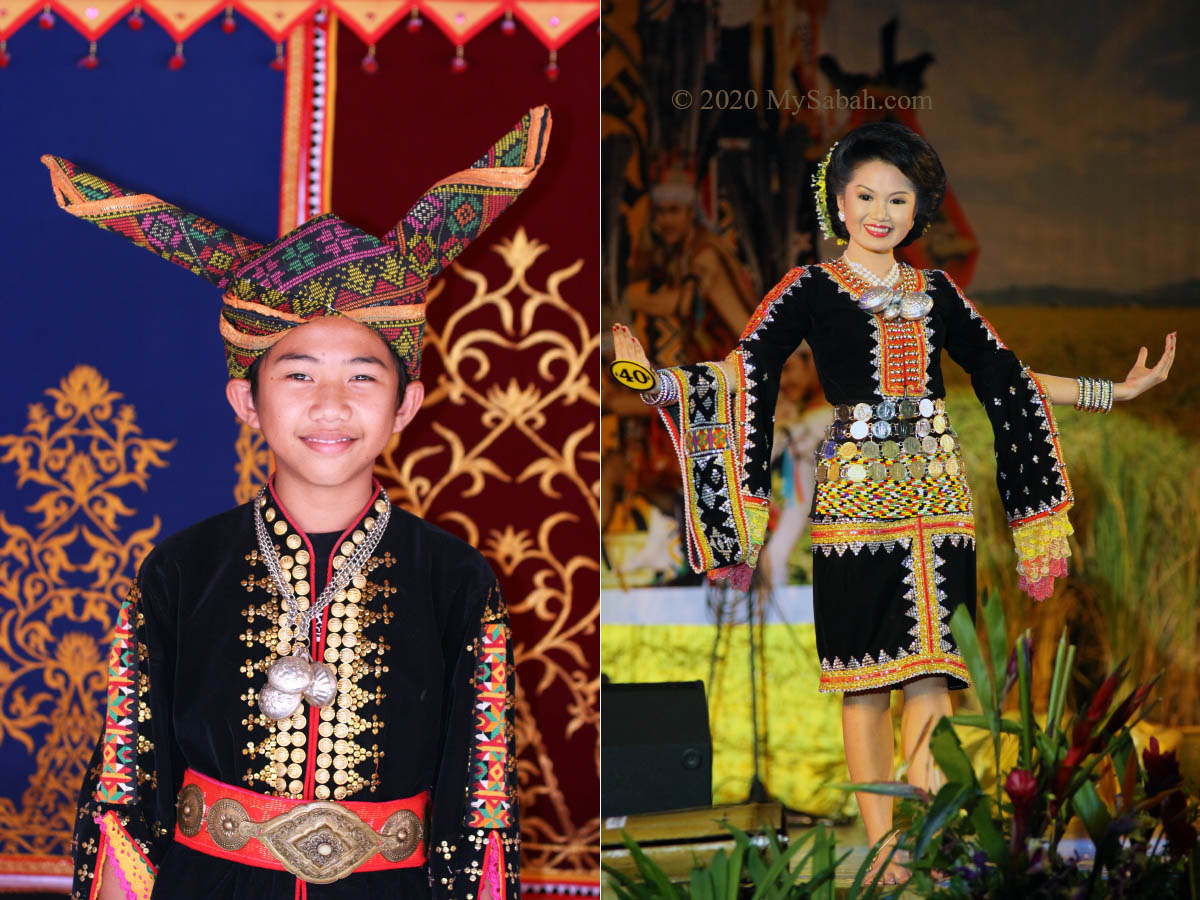

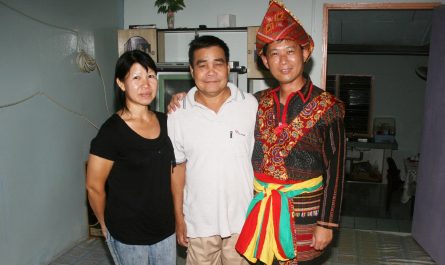
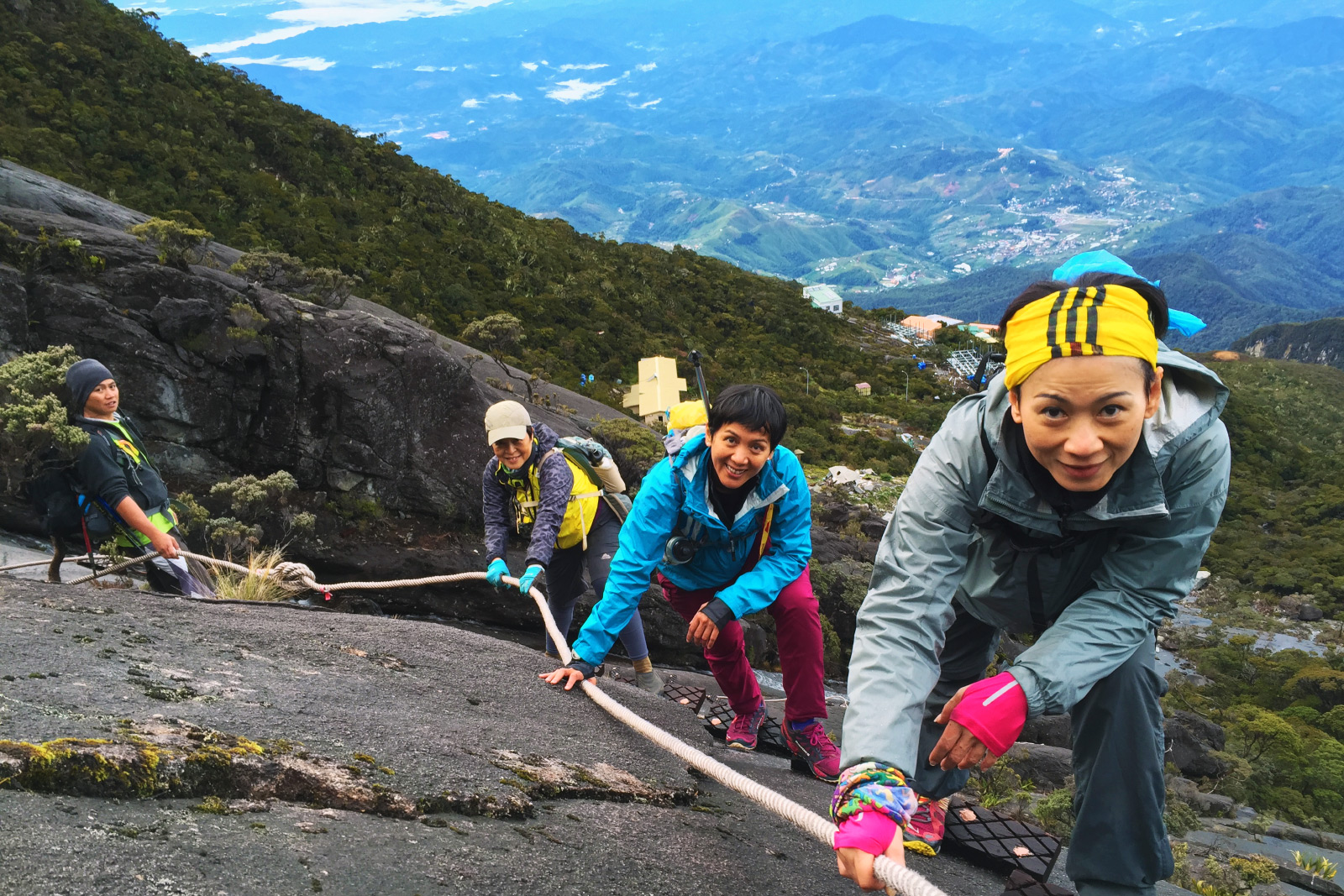
Good info, will keep this as my references.